You are using an outdated browser. Please upgrade your browser to improve your experience.

History of Tourism in Bhutan
- Tourism Council of Bhutan
- Community Based Tourism
- Handicraft Shops in Bhutan
- Cabs Booking in Bhutan
- Hotels & Resorts in Bhutan
- Tourist Guides in Bhutan
History of Tourism in Bhutan – Tourism in Bhutan began in 1974, when the Government of Bhutan, in an effort to raise revenue and to promote the country’s unique culture and traditions to the outside world, opened its isolated country to foreigners. In 1974, 287 tourists visited Bhutan. Since then the number of tourists visiting Bhutan has increased to 2,850 in 1992, rising dramatically to 7,158 in 1999. By the late 1990s tourism contributed over US$2 million in annual revenue. Today tourism is 2nd highest revenue contributor after Hydro Power.
History of Aviation in Bhutan – Bhutan’s first airline, Drukair was established as per the Royal Charter on 5 April 1981. Paro International Airport is the only international airport in Bhutan. The first inauguration flights by Drukair, the flagship carrier for Bhutan, ran on February 11, 1983, departing for Kolkata and returning the following day. Today Druk Air and Bhutan Airline operates flights from five countries.
History of Tourism in Bhutan. History of Aviation in Bhutan. History of Tourism Council of Bhutan. TCB Bhutan.
Tourism Council of Bhutan . Cabs Booking in Bhutan . Community Based Tourism . Handicraft Shops in Bhutan . History of Tourism in Bhutan . Hotels & Resorts in Bhutan . Tourism Council of Bhutan . Tourist Guides in Bhutan .
Know more about Bhutan. Travel Guide Foreign Tourist . Travel Guide Indian Tourist . Travel Guide Regional Guest . Tour Operators in Bhutan . Tour Booking Conditions . Bhutan Flights . Sightseeing Places of Bhutan . Day Hikes in Bhutan . Best Places to Visit . Tourist Information Center . Wellness Tourism in Bhutan . Helicopter Ride in Bhutan . Festivals in Bhutan . Get Your Bhutan Visa . Payments to Bhutan . Foods & Restaurants . Foreign Celebrities Bhutan . OMG My Bhutan . Tourism Council of Bhutan . Medias in Bhutan . NGOs in Bhutan . His Majesty Kings of Bhutan . Bhutan Land of Happiness . Travel Checklist for Bhutan . Heavenly Bhutan Travels . Travellers Book . Outdoor Activities . Awards .
How to plan your holidays in Bhutan? Booking Bhutan Tour with Heavenly Bhutan. Find best hotels in Bhutan . Best car rental service in Bhutan . Enjoy village homestay in Bhutan . Book your flight tickets to Bhutan . Find best restaurants in Bhutan . Find Bhutan tour packages . Choose best Treks in Bhutan . Join small private group tours to Bhutan . Outdoor Activities in Bhutan . Reviews of Heavenly Bhutan Travels . HBT Awards & Recognition .
Bhutan Opens Itself to the World - and Tourists
The government is considering new policies to manage the overflow of international visitors to the South Asian kingdom.

Bhutan Tackles an Overflow of Tourism
Kuni Takahashi | Getty Images
The capital city of Thimphu, is seen through prayer flags.
THIMPHU, Bhutan — Travelers to the tiny Himalayan kingdom of Bhutan have long likened it to a real-life Shangri-La — a mystical, happy place, accessible to few outsiders. It's a country that measures growth by measuring Gross National Happiness , and that guards its forest cover so fiercely that it is the only country in the world that absorbs more carbon dioxide than it produces.
But now some worry that Bhutan is becoming yet another crowded tourist destination, sending officials scrambling to draw up new rules that may include caps on visitors, according to the Tourism Council of Bhutan.
Sandwiched between the Asian giants of China and India, Bhutan first opened its doors to international visitors in the 1970s, adopting a policy of "High Value, Low Impact" tourism. It mandated that foreigners could only visit Bhutan with a tour operator, and must spend a minimum of $250 daily per person during the peak season, and $200 in the off-peak season, while in the country. This cost includes accommodation, transport, and a " sustainable development " fee that goes toward providing free health care and education to Bhutan's citizens.
The World's 10 Most Peaceful Countries

The high minimum spend restricted visitors to Bhutan and won it global recognition for having avoided the kind of "over-tourism" that has become a nightmare for many popular destinations . Residents of the Italian city of Venice and the Greek island of Santorini, for example, have protested against the huge influx of tourists which they say is spoiling the environment and straining local infrastructure.
Now some of these problems are coming to Bhutan, thanks to a different policy it has toward its friendly but populous neighbor: India. Bhutan doesn't require citizens of India, Bangladesh and the Maldives, together called "regional tourists," to spend any minimum amount. This, plus the growing affluence of the 600-million-strong Indian middle class, has made Bhutan an attractive travel destination where they can visit for as little as $50 a night.
Last year, around 200,000 Indians visited Bhutan , up from just 50,000 in 2014, according to government data. Meanwhile, only 63,000 "international" or fee-paying tourists went to Bhutan last year. Bhutan, with a population of just 750,000, wasn't prepared for the sharp increase in regional tourists.
Crowds Overwhelm Buddhist Sites
A large number of Indian tourists enter Bhutan in mini-buses or large SUVs and crowd in on the country's major tourist sights. Conservationists say the crowds, noise and litter is disturbing the charm of the country.
"A lot of our attractions are Buddhist places, temples, monasteries — places where a traveler would go and seek some solace, tranquility, you know, where you reflect over your life and get a sense of appreciation," says Karma Tshering, founder of the Bhutan Sustainable Tourism Society. "But those expectations are diluted because you're just confronted with garbage, noise, mismanagement, too many people running around."
This past summer, a video made by Indian actor Siddhant Karnick, in which he called out an Indian group for being noisy at a Buddhist memorial site in Bhutan, went viral. In a phone interview, Karnick says he would support steps to restrict mass tourism so that Bhutan can continue maintaining its balance between man and nature. "We need some places like Bhutan in the world."
For international visitors who pay the $250-minimum-spend-per-night, the crowds raise questions about Bhutan's image of exclusivity.
Brent Olson, a tour operator in San Francisco who has been bringing visitors to Bhutan for more than three decades, says in earlier times tour groups would have an entire monastery to themselves and could meditate there. Now, his groups have to stand in line with dozens of other tourists to get inside the same temples.
"If everywhere you go, it's inundated by budget travelers, then what makes the destination unique?" Olson asks, adding that his clients spend $500 to $1,500 a day in Bhutan. Lately, he has restructured his Bhutan itineraries for different times of the year and to include different locations in the country to avoid crowds.

Arun Sankar | AFP | Getty Images
Visitors walk near a statute of the Buddha Dordenma in Kuensel Phodrang Nature Park in Thimphu.
A Country With Many Forests, No Traffic Lights
To be sure, despite the greater number of visitors, Bhutan remains a place like no other in the world.
More than 60% of the country is covered by forests, as mandated by its Constitution . The country has no traffic lights; busy intersections in the capital city of Thimphu are manned by police officers. Locals typically wear their national dress in public, which for men is a knee-length robe, and for women an embroidered jacket and a long, wraparound skirt.
All buildings in Bhutan are built in the traditional style that uses wood beams and avoids glass and steel. Some of the country's fortresses, which are called "dzongs," use an architectural style that does not use a single nail.
Bhutan's king voluntarily gave up the monarchy and introduced democracy in 2008, though as then-Prime Minister Tshering Tobgay said in 2016 at a Ted talk, the public did not call for democracy. The fourth king introduced the idea of " gross national happiness " in 1972 that aims to foster spiritual growth along with economic development, as a way to make people happy.
Happiness, at least the economic kind, hasn't yet reached all the Bhutanese. Around 8% of the population lives below the national poverty line. Many young people have shifted away from agriculture in recent years, but a lack of jobs has led to high rates of youth unemployment.
Balancing Development and Preservation
Tourism has emerged as a key industry for the economy, and regional and Indian travelers are fueling this growth. A construction boom is underway in the major cities of Thimphu, Paro and other tourist towns, as many landowners are rushing to build budget hotels and guest rooms.
One such hotel that opened last year is Hotel Dragon, in the village of Bondey, near Paro. The two-star hotel has 10 rooms, which go for as low as $20 a night for a double room, says Tshering, the owner who wanted to be identified by one name only. He says he built the hotel to secure the future of his three young children, because there is a shortage of white-collar jobs in Bhutan. The hotel is occupied mainly by Indian budget travelers, he says, so if the government imposes rules that restrict them, it would be a blow for him.
The Tourism Council of Bhutan, the government body in charge of tourism, has to manage a balance between the economic benefits of more regional tourists and the environmental consequences.
Dorji Dhradhul, director general of the Council, said in an email interview that part of the problem is that most tourists to Bhutan visit only five of the country's 20 districts. "This so-called overcrowding can be addressed by spreading out tourists to other areas and also putting in place some better management tools," he says.
Meanwhile, the Council is considering new rules to be imposed on regional tourists, such as requiring them to pay a development fee like what international visitors pay. For visits to certain monasteries and other sights, they may impose an entry fee or caps on total number of visitors.
"Our vision is to continue to make Bhutan live up to the image of being the Last Shangri-La – the tourist paradise on Earth," Dhradhul says.
Join the Conversation
Recent articles, best countries.

Education News

Best Countries Rankings
- # 1 Switzerland
- # 5 Australia
- # 5 United States
Health News Bulletin
Stay informed on the latest news on health and COVID-19 from the editors at U.S. News & World Report.
Sign in to manage your newsletters »
Sign up to receive the latest updates from U.S News & World Report and our trusted partners and sponsors. By clicking submit, you are agreeing to our Terms and Conditions & Privacy Policy .
You May Also Like
Switzerland is world's best country.
Julia Haines Sept. 6, 2023

Photos: Best Countries Around the World
Sept. 6, 2023

The 25 Best Countries in the World
Elliott Davis Jr. Sept. 6, 2023

China Set to Launch High-Stakes Mission to Moon's 'Hidden' Side
Reuters April 28, 2024

Deforestation in Indonesia Spiked Last Year, but Resources Analyst Sees Better Overall Trend
Associated Press April 28, 2024

Tourism in Bhutan
Bhutan opened its door to the outside world with the formulation of Tourism Regulation in 1971 to raise its revenue and to promote the country’s unique culture and traditions. The actual arrival of tourists started only in 1974 with 287 visitors. Since then the number of tourists has been increasing every year and in 2013 with record high inbound arrivals of 116,209 as per Tourism Council records.
Despite being open to foreigners, the government is acutely aware of the environmental impact tourists can have on Bhutan’s unique and virtually unspoiled landscape and culture. The Royal Government of Bhutan therefore, adheres strongly to a policy of high value, low impact/volume tourism which serves the purpose of creating an image of exclusivity and high- yield for Bhutan.
Until 1991, then known as Bhutan Tourism Corporation (BTC), a quasi-autonomous and self-financing body, implemented the government’s tourism policy. Tourism was however, privatized in 1991, facilitating private sector investment and activity. As a result, today over 1300 licensed tourist companies operate in the country.
The Director of the Tourism Council of Bhutan the monitoring authority of the tourism sector writes “Bhutan tourism industry continued to grow in 2013 with a +10.25% increase over the previous year contributing significantly to GDP receipts, hard currency reserves, and employment generation in the country. The Royal Government continues to accord high priority to the industry as a major engine of economic growth in the 11th FYP period. The stable performance of the industry in the last five years indicate that tourism is poised to grow in the expected trajectory to meet the aspired targets by the end of 2018″ which is an encouraging statement for the sector.
Tourism sector today is one of the highest revenue earners for the nation.
WE ARE AFFILIATED WITH THE FOLLOWING TOURISM STAKE HOLDERS
- The Enablers
- Expert views
- Edition notice
- Flagship Events
- World Export Development Forum (WEDF)
- Micro Small and Medium-sized Enterprises (MSME) Day
- Día Internacional de la Mujer
- Journée internationale des femmes
- International Women’s Day
- Shetrades global
- Good Trade Summit 2023
- For meeting participants
- Travel conditions for meeting participants
- Conditions de voyage pour les participants aux réunions
- Restricciones de viaje para los participantes en reuniones
- Femmes et marchés publics
- Mujeres en la adquisición pública
- Women in Public Procurement
- Let's #OrangetheWorld
- Get in touch
- Press releases
- Media advisories
- In the media
- Social media
- Domaines d'impacts et principaux services
- Impact areas and core services
- Áreas de impacto y servicios principales
- Agribusiness and food systems
- Fruits and vegetables
- Creative industries
- E-commerce policy
- Fibres, textiles and clothing
- Information and communication technology and outsourcing
- Manufactured goods
- Professional services
- Transportation and logistics
- Digital transformation and e-commerce
- Industrial competitiveness
- International value chains
- Investment policy
- Least developed country competitiveness
- Multilateral trade integration
- Non-tariff measures
- Regional trade integration
- Trade development strategies
- Trade facilitation
- Trade in services
- Trade policy formulation and implementation
- Access to finance and investment
- Business resilience
- Covid-19 response
- Export marketing and branding
- Entrepreneurship and strategic innovation
- MSME export development
- Production operations
- Sustainable packaging
- Skills development
- Green competitiveness
- Human rights due diligence
- Responsible sourcing
- Sustainability standards
- Sustainable trade and investment
- Migrants and refugees
- Women's economic empowerment
- Youth and trade
- Asociaciones
- Partenariats
- Partnerships
- Micro, small and medium-sized enterprises
- Business Support Organizations
- Policymakers
- Priority groups
- Least developed countries
- Landlocked developing countries
- Small island developing states
- Sub-Saharan Africa
- Eastern Europe and Central Asia
- Middle East and North Africa
- Latin America and the Caribbean
- Asia and the Pacific
- Research and data
- Import of goods
- Export of goods
- Import of services
- Export of services
- Africa Marketplace Explorer
- African Trade Observatory
- Export potential map
- Global trade helpdesk
- Investment map
- Latin America and the Caribbean Marketplace Explorer
- LDC Trade Tracker
- Market access map
- Market price information
- Procurement map
- Rules of origin facilitator
- Trade briefs
- SheTrades.com
- SDG trade monitor
- SheTrades outlook
- Standards map
- Sustainability gateway
- Sustainability map
- Ye! Community
- SME Trade Academy
- Business diagnostic and benchmarking
- Global Textile Academy
- NTM business surveys
- Strategies Implementation Management Tool
- Trade obstacles alert mechanism
- Intra-African trade e-learning
- SheTrades virtual learning space
- Standards e-learning
- Supply Chain Management
- Thematic collections
- Food and agriculture
- Inclusive trade
- Regional trade
- SME Competitiveness Outlook
- Sustainability
- For contributors
- Style guide and resources
- Biblioteca electrónica
- Bibliothèque électronique
- ITC e-library
- Financement
- Financiación
- Adquisiciones
- Procurement
- Service des achats
- ITC and you
- Export Potential Map
- Global Trade Helpdesk
- Investment Map
- Market Access Map
- Market Price Information
- Procurement Map
- Rules of Origin Facilitator
- Trade Briefs
- Trade Strategy Map
- Green to Compete
- SheTrades Outlook
- Standards Map
- Sustainability Gateway
- Sustainability Map
- SDG Trade Monitor
- YE! Young Entrepreneurs
- Benchmarking - TSI performance improvement
- ecomConnect
- NTM Business Surveys
International Trade Centre tools
- News & Events
- " data-item-id="lang-switcher">English
- ITC and you Business Business support organizations Policymakers Funders & partners Media Academia
- Visit news & events

See how our work is featured in the media, receive the latest updates from the field directly into your inbox, or view our global collection of photos, videos and podcasts.
- Visit our work

We provide tailored support, aligned with national objectives, to grow trade opportunities for micro, small and medium businesses in developing countries.
- Visit resources

Our market analysis and resource solutions will help you review crucial trade related information in over 200 countries and territories.
- Visit about us

We aim to bring prosperity, inclusiveness and sustainability to developing countries through trade-related development assistance.
- Visit this section
- news & events
- Media centre
- Regions and countries
- Data and analysis
- Publications
- Business support organizations
- Funders & partners
- Trade Forum
- Visit events
- World Trade Promotion Organizations (WTPO) Conference and Awards
- Good Trade Summit / T4SD Forum
- Visit campaigns
- Visit media centre
- media centre
- Info for journalists
- Visit multimedia
- Visit impact areas and core services
- impact areas and core services
- Visit topics
- Goods and services
- Business environment
- Business performance
- Visit clients
- Visit priority groups
- priority groups
- Visit regions and countries
- regions and countries
- Priority countries
- Visit data and analysis
- data and analysis
- Trade statistics
- Visit tools
- Market data
- Sustainability and inclusivity
- Visit e-learning
- Visit publications
- publications
- Visit who we are
- Structure and Management
- Gender equality, diversity and inclusion
- Innovation Lab
- ITC 60 years
- Visit governance
- The Joint Advisory Group (JAG)
- The Consultative Committee of ITC Trust Fund (CCITF)
- Corporate documents
- Visit careers
- Job opportunities
- Visit trade forum
- trade forum
- Visit world export development forum (wedf)
- world export development forum (wedf)
- World Export Development Forum 2023
- Visit world trade promotion organizations (wtpo) conference and awards
- world trade promotion organizations (wtpo) conference and awards
- Visit good trade summit / t4sd forum
- good trade summit / t4sd forum
- Visit info for journalists
- info for journalists
- Visit food and agriculture
- food and agriculture
- Visit goods and services
- goods and services
- Visit business environment
- business environment
- Visit business performance
- business performance
- Visit sustainability
- sustainability
- Visit inclusive trade
- inclusive trade
- Visit priority countries
- priority countries
- Visit trade statistics
- trade statistics
- Visit market data
- market data
- Visit sustainability and inclusivity
- sustainability and inclusivity
- Visit structure and management
- structure and management
- Executive Director
- Deputy Executive Director
- Visit history
- 50th anniversary
- Former Executive Directors
- Visit corporate documents
- corporate documents
- Annual report
- Strategic plan
- Operational plan
- Financial report and audited financial statements
- Proposed programme budget
- Visit job opportunities
- job opportunities
- Staff and consultancies
- Internships
Bhutan: A model for sustainable tourism development
Bhutan’s long-term strategy of controlled tourism with a focus on sustainability and quality has secured the country’s reputation as an exclusive and distinctive destination while ensuring the long-term sustainability of the industry and its contribution to the economy.
Bhutan has a clearly established framework for the development of tourism underpinned by the country’s Gross National Happiness (GNH). Tourism was introduced to Bhutan in 1974 as part of a visionary modernization and economic development plan introduced by Bhutan’s former King, Jigme Singye Wangchuck.
Aware that an unrestricted flow of tourists could negatively impact Bhutan’s pristine environment and unique culture, the government adopted a policy of ‘high-value, low-volume’ tourism in order to control the type and quantity of tourism right from the start.
‘The principle of high-value, low-impact tourism development, guiding tourism’s growth in Bhutan, is highly commendable and has undoubtedly contributed to the unique tourism brand of this country,’ said the World Tourism Organization (UNWTO) Secretary-General, Mr. Taleb Rifai, during an official visit to the country in January 2011.
So far, the government’s objective of maximizing foreign exchange earnings while minimizing the potentially adverse cultural and environmental impacts of tourism has paid off. The number of tourist arrivals has increased from just 287 in 1974 to close to 41,000 high-end tourists in 2010. There was also a 56% increase on 2009 figures in high-end arrivals from neighbouring countries, especially India, highlighting the importance of the regional market. Demonstrating the resilience of the sector, these figures were achieved despite events such as ash clouds in Europe and unstable political situations in the major gateways to Bhutan such as Bangkok.
Conservative figures by the Tourism Council of Bhutan estimate tourism’s contribution to GDP at US$ 90 million in 2010. It has also contributed to employment and created income opportunities through the development of locally owned and operated private-sector enterprises. There are now some 21,000 people employed directly and indirectly in tourism, and an increasing number of Bhutanese entrepreneurs are also investing in the sector. Close to 80% of Bhutan’s 700,000 inhabitants live in rural areas and most are engaged in the agricultural sector; but tourism has contributed to earnings from tourist transport, portage and the promotion of indigenous handicrafts.
‘For a small landlocked country like Bhutan, tourism plays a very important role in generating employment opportunities and revenue. It is second only to hydropower in terms of revenue generation,’ says Ms. Chhimmy Pem, the Head of Marketing and Promotion at the Tourism Council of Bhutan.
One of the key factors in the success of Bhutan’s tourism strategy has been the privatization of the industry. Until 1991, the Bhutan Tourism Corporation, a quasi-autonomous and self-financing body, implemented the government’s tourism policy, and all tourists came as guests of the Corporation. The Corporation, in turn, operated the transport services and nearly all the hotels and accommodation facilities.
The Tourism Council was established under the Ministry of Trade and Industry and the Department of Tourism with the primary responsibility of developing new tourism growth opportunities, undertaking research, protecting tourism assets and its impact on the environment, and managing the administration of visa and trekking permits.
Bhutan’s main tourism attractions are its traditional culture and way of life, its religious festivals, historic monuments and its pristine environment. Protecting nature and culture is part of the Bhutanese value system and is an important aspect of the traditional way of life in Bhutan, and its tourism policy reflects these concerns. The policy of imposing a US$ 200 per person per day tariff (including a US$ 65 royalty charged by the government plus food, accommodation, local transport and guides) has succeeded in providing a source of government income for education, health and building tourism and transport infrastructure, while at the same time making tourism in Bhutan an exclusive and distinctive experience.
The Tourism Council of Bhutan works in close cooperation with the Association of Bhutanese Tour Operators, the Hotel Association of Bhutan and the Guide Association of Bhutan to establish a channel for closer and more effective collaboration between the tourism industry and the Department of Tourism. It also ensures that the interests of the private sector are represented in developing tourism in a sustainable and responsible manner. The government encourages initiatives to enable the private sector to provide value for money to their clients. For example, new luxury hotels, the upgrading of existing hotels and foreign direct investment are encouraged through tax and fiscal incentives.
With ecotourism being the fastest growing market in the tourism industry in general and with the strength of the country’s natural assets, Bhutan has focused on strategies to promote and develop its ecotourism and nature -based tourism.
To overcome the industry’s biggest challenges – accessibility and seasonality – the Tourism Council of Bhutan is working with the national airline, Drukair, to increase the frequency of flights, improve connectivity, add more aircraft to its fleet, and build three additional airports to meet increasing demand. The Council is also working with hotel and tour operators to promote Bhutan as a year-round destination.
For further information visit www.tourism.gov.bt .
Share this article
Related news.
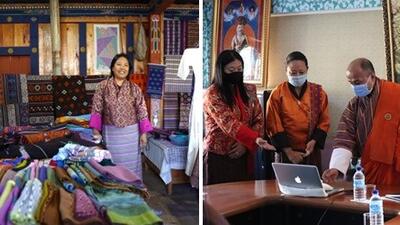
Bhutan improves trade competitiveness and economic diversification; traditional products by artisans and farmers gain access to international markets with the support of EU Bhutan Trade Support Project
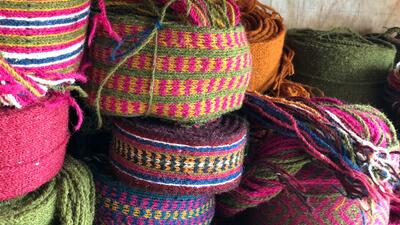
Textile sector benefits from stronger market linkages
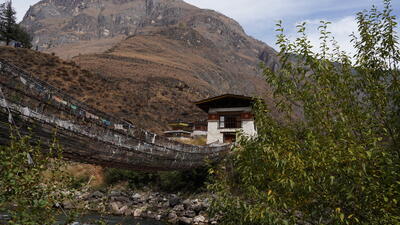
Improving Yak Cheese Production in Bhutan

Strengthening planning and negotiation performance for trade planning and policy
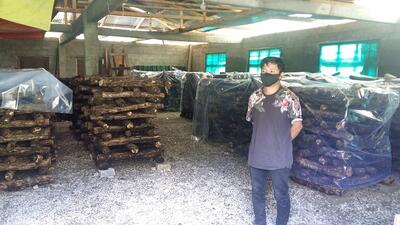
Mushroom farmers in Bhutan on the path to prosperity
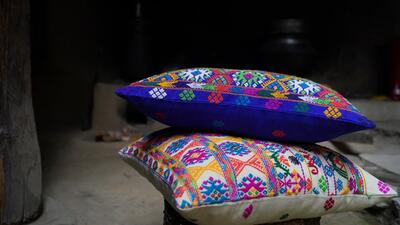
Making a big impression
Brand Bhutan and the Political Economy of Sustainable Tourism Development
- First Online: 08 April 2022
Cite this chapter

- Poulomi Dasgupta 4 &
- Alison Vogelaar 4
Part of the book series: Tourism, Hospitality & Event Management ((THEM))
692 Accesses
1 Citations
3 Altmetric
Bhutan’s unique status as one of the original sustainable tourism destinations provides a rare opportunity to explore the political economy of tourism development. Founded on the philosophy of Gross National Happiness, Bhutan’s modern economy and tourism sector are embedded in the contemporary paradoxes of sustainable development. This chapter responds to gaps in the literature on the political economy of tourism development, exploring Bhutan’s tourism sector as it helps to articulate the tensions between sustainable tourism and sustainable development. Using secondary literature, government and trade reports as well as secondary field survey data, our study investigates distributional inequities in Bhutan’s tourism sector. Our study found that the benefits of the tourism sector in Bhutan are unevenly distributed and, more significantly, that existing data may not allow us to adequately measure, assess, and make recommendations for improving sustainability in the sector. We conclude with recommendations for redressing inequities in the context of Bhutan’s tourism sector as well as provisional considerations about the need for better means of accounting for the diverse, and often competing, demands of sustainable development.
This is a preview of subscription content, log in via an institution to check access.
Access this chapter
- Available as PDF
- Read on any device
- Instant download
- Own it forever
- Available as EPUB and PDF
- Compact, lightweight edition
- Dispatched in 3 to 5 business days
- Free shipping worldwide - see info
- Durable hardcover edition
Tax calculation will be finalised at checkout
Purchases are for personal use only
Institutional subscriptions
1 USD ≈ 75 Nu.
Ansari, M. (2012). A Shangri-La economy: Exploring Buddhist Bhutan . Universal Publishers.
Google Scholar
Aronczyk, M. (2008). ‘Living the brand’: Nationality, globality and identity strategies of nation branding consultants. International Journal of Communication, 2 , 41–65.
Basu, K. (1996). Bhutan-the political economy of development . South Asian Publishers.
Bianchi, R. V. (2011). Tourism, capitalism and Marxist political economy. In J. Mosedale (Ed.), Political economy of tourism: A critical perspective (pp. 17–37). Routledge.
Bianchi, R. V. (2018). The political economy of tourism development: A critical review. Annals of Tourism Research, 70 , 88–102.
Article Google Scholar
Bianchi, R. V., & de Man, F. (2021). Tourism, inclusive growth and decent work: A political economy critique. Journal of Sustainable Tourism, 2–3 , 353–371.
Briassoulis, H., & van der Straaten, J. (2000). Tourism and the environment: Regional, economic, cultural and policy issues . Springer.
Book Google Scholar
Britton, S. G. (1982). The political economy of tourism in the third world. Annals of Tourism, 9 (2), 331–359.
Brown, J., & Bird, N. (2011). Bhutan’s success in conservation: Valuing the contribution of the environment to gross national happiness . Overseas Development Institute.
Choegya, L. (2019). Tourism in the Himalayas. The Druk Journal, 5 (11), 11–14. Accessed November 12, 2020, from http://drukjournal.bt/wp-content/uploads/2021/06/Tourism-in-the-Himalayas.pdf
Fitzgerald, P. (2010). Bhutan regions map . Accessed February, 20, 2021, from https://commons.wikimedia.org/w/index.php?curid=22744138
Font, X., & Buckley, R. (2001). Tourism ecolabelling: Certification and promotion of sustainable management . CAB International.
Font, X., & McCabe, S. (2017). Sustainability and marketing in tourism: Its contexts, paradoxes, approaches, challenges and potential. Journal of Sustainable Tourism, 25 (7), 869–883. https://doi.org/10.1080/09669582.2017.1301721
Future Brand. (2017). Made in Bhutan . Accessed January 29, 2021, from https://www.futurebrand.com/our-work/bhutan
Gibson, C. (2009). Geographies of tourism: Critical research on capitalism and local livelihoods. Progress in Human Geography, 33 (4), 527–534.
Gross National Happiness Center. (n.d.). 4 Pillars of GNH . Accessed October 4, 2020, from http://www.gnhcentrebhutan.org/what-is-gnh/the-4-pillars-of-gnh/
Gross National Happiness Commission. (2013). Eleventh five year plan document (2013–2018) . Royal Government of Bhutan. Accessed November 11, 2020, from https://www.gnhc.gov.bt/en/wp-content/uploads/2017/05/Eleventh-Five-Year-Plan.pdf
Gross National Happiness Commission. (2018). Evaluation of tourism (focus on village home stays and campsites) . Accessed October 1, 2020, from https://www.gnhc.gov.bt/en/wp-content/uploads/2018/08/Evaluation-Report-GNHC-complete.pdf
Gurung, D. B., & Scholz, R. W. (2008). Community-based eco-tourism in Bhutan: Expert evaluation of stakeholder-based scenarios. The International Journal of Sustainable Development and World Ecology, 15 (5), 397–411.
Gurung, D. B., & Seeland, K. (2008). Ecotourism in Bhutan: Extending its benefits to rural communities. Annals of Tourism Research, 35 (2), 489–508.
Hall, C. M. (1998). Historical antecedents of sustainable development and ecotourism: New labels on old bottles? In C. Hall & A. Lew (Eds.), Sustainable tourism: A geographical perspective (pp. 13–24). Longman Harlow.
Hall, C. M. (2010). Changing paradigms and global change: From sustainable to steady-state tourism. Tourism Recreation Research, 35 , 131–145.
Hall, C. M. (2015). Economic greenwash: On the absurdity of tourism and green growth. In M. Vijay & K. Wilkes (Eds.), Tourism in the green economy (pp. 339–356). Routledge.
Hughes G (2004) Tourism, sustainability and social theory. In Lew AA, Hall CM, Williams AM (eds) A companion to tourism . Blackwell Publishing, , p 498–509.
Chapter Google Scholar
Hunter, C., & Green, H. (1995). Tourism and the environment: A sustainable relationship? Routledge.
IIM (International Institute of Management). (2005). Gross National Happiness/Well-being (GNH/GNW)-A Policy White Paper . Accessed on January 20, 2020, from https://www.iim-edu.org/grossnationalhappiness/
Jansen, S. C. (2008). Designer nations: Neoliberal nation branding - brand Estonia. Social Identities, 14 (1), 121–142.
Kaneva, N. (2011). Nation branding: Toward an agenda for critical research. International Journal of Communication, 5 (1), 117–141.
Keen, D. (2019). The risks of high volume tourism. The Druk Journal, 5 (11), 15–23.
McCarthy, J. (2018). The birthplace of ‘Gross National Happiness’ is growing a bit cynical. NPR Parallels . Accessed January 28, 2021, from https://www.npr.org/sections/parallels/2018/02/12/584481047/the-birthplace-of-gross-national-happiness-is-growing-a-bit-cynical
Ministry of Finance. (2017). Rules on the fiscal incentive act of Bhutan 2017 . Accessed November 19, 2020, from https://www.mof.gov.bt/wp-content/uploads/2014/07/Rules_FI2017.pdf
Montes, J., & Kafley, B. (2019). Ecotourism discourses in Bhutan: Contested perceptions and values. Tourism Geographies, 35 (2), 489–508. https://doi.org/10.1080/14616688.2019.1618905
Montgomery, A. (2016, February 16). Branding Bhutan-How do you capture a country’s “Gross National Happiness”?. Design Week . Accessed January 28, 2021, from https://www.designweek.co.uk/issues/15-21-february-2016/branding-bhutan-how-do-you-capture-gross-national-happiness/ .
Mosedale, J. (2011). Political economy of tourism: A critical perspective . Routledge.
Munro L (2016) Where did Bhutan’s gross national happiness come from? The orgins of an invented tradition. Asian Affairs 47(1):71–92. http://dx.doi.org/ https://doi.org/10.1080/03068374.2015.1128681
National Council of Bhutan. (2016). Review report on tourism policy and strategies. Accessed November 17, 2020, from https://www.mof.gov.bt/wp-content/uploads/2014/07/Rules_FI2017.pdf
National Statistics Bureau and United Nations Development Program Bhutan. (2020). Rapid Socio-economic Impact Assessment of COVID-19 on Bhutan’s Tourism Sector . Accessed October 14, 2020, from https://www.bt.undp.org/content/bhutan/en/home/library/environment_energy/rapid-socio-economic-impact-assessment-of-covid-19-on-bhutan-s-t.html
Nelson, F. (2012). Blessing or curse? The political economy of tourism development in Tanzania. Journal of Sustainable Tourism, 20 (3), 359–375.
Peet, R., & Hartwick, E. (2015). Theories of development: Contentions, arguments, alternatives (3rd ed.). Guilford Press.
Penjor, U. (2019). Tourism and hotels. The Druk Journal, 5 (2) Accessed November 12, 2020, from http://drukjournal.bt/editorial-a-deep-dive-into-tourism-in-bhutan/
Purvis, B., Mao, Y., & Robinson, D. (2019). Three pillars of sustainability: In search of conceptual origins. Sustainability Science, 14 , 681–695. https://doi.org/10.1007/s11625-018-0627-5
Rebrand. (2018). Made in Bhutan . Accessed January 28, 2021, from https://rebrand.com/best-made-in-bhutan/
Reddy, M. V., & Wilkes, K. (2015). Tourism in the green economy . Routledge.
Rinzin, C., Vermeulen, W. J. V., & Glasbergen, P. (2007). Ecotourism as a mechanism for sustainable development: The case of Bhutan. Environmental Sciences, 4 (2), 109–125.
Royal Monetary of Bhutan. (2019). Annual report . Accessed October 15, 2020, from https://www.rma.org.bt/publication.jsp?id=2
Santini, M., Tran, T. T., & Beath, A. (2017) Investment climate assessment of Bhutan. World Bank . Accessed November 16, 2020, from https://openknowledge.worldbank.org/handle/10986/28539
Schumacher, E. F. (1973). Small is beautiful - a study of economics as if people mattered . Abacus Publications.
Schwak, J. (2016). Branding South Korea in a competitive world order: Discourses and dispositives in neoliberal governmentality. Asian Studies Review, 43 , 426–443.
Song, K. H. (2019). The Bhutan brand. The Druk Journal, 5 (11), 11–14. Accessed November 12, 2020, from http://drukjournal.bt/the-bhutan-brand/
Song, H., Dwyer, L., Lee, G., & Cao, Z. (2012). Tourism economics research: A review and assessment. Annals of Tourism Research, 39 (3), 1653–1682. https://doi.org/10.1016/j.annals.2012.05.023
Suntikul, W., & Dorji, U. (2015). Tourism development: The challenges of achieving sustainable livelihoods in Bhutan’s remote reaches. International Journal of Tourism Research, 18 (5), 447–457. https://doi.org/10.1002/jtr.2062
Tashi, T. (2015). High value low volume. Kuensel . Accessed February 20, 2020, from https://kuenselonline.com/high-value-low-volume/
The Druk Journal. (2019). Tourism in Bhutan . Accessed October 1, 2020, from https://www.tourism.gov.bt/news/druk-journal-issue-on-tourism-in-bhutan
Tourism Council of Bhutan. (2011, March 18). Bhutan, happiness is a place, new campaign for the Kingdom of Bhutan. Travel Daily News. Accessed on December 24, 2021, from https://www.traveldailynews.com/post/%22bhutan%2C-happiness-is-a-place%22%2C-new-campaign-for-the-kingdom-of-bhutan-42216
Tourism Council of Bhutan. (2014). Bhutan Tourism Monitor 2014 . Accessed November 2, 2020, from https://www.tourism.gov.bt/uploads/attachment_files/tcb_22nEms9Y_Bhutan%20Tourism%20Monitor%202014.pdf
Tourism Council of Bhutan. (2019a). Bhutan tourism monitor 2019 . Accessed November 2, 2020, from https://www.tourism.gov.bt/uploads/attachment_files/tcb_K11a_BTM%202019.pdf
Tourism Council of Bhutan. (2019b). Tourism policy of the kingdom of Bhutan . Accessed October 14, 2020, from https://www.tourism.gov.bt/uploads/attachment_files/tcb_Hw70_FINAL%20DRAFT%20TOURISM%20POLICY.pdf
Tshomo, D. (2020, January 17). Govt. proposes daily SDF 25 percent of USD 65 for regional tourist, Kuensel. Accessed on January 2022, from https://kuenselonline.com/govt-proposes-daily-sdf-25-percent-of-usd-65-for-regional-tourist/
UNEP. (1995). Environmental codes of conduct for tourism . United Nations Environment Programme.
UNWTO (United Nations World Tourism Organization). (2021). Tourism in the 2030 agenda . https://www.unwto.org/tourism-in-2030-agenda . Accessed 2 February 2021 http://documents1.worldbank.org/curated/en/880451468743944567/pdf/308210BHU0Governance01see0also0307591.pdf Accessed 17 November 2020.
Varga, S. (2013). The politics of nation branding: Collective identity and public sphere in the neoliberal state. Philosophy and Social Criticism, 39 (8), 825–845. https://doi.org/10.1177/0191453713494969
Wangdi, T. (2015). No Guests in Tang’s Farmhouse . Kuensel. Accessed on November 11, 2020, from https://kuenselonline.com/no-guests-in-tangs-farmhouses/
WCED (World Commission on Environment and Development). (1987). Our common future . Oxford University Press.
Weaver, D. B. (2004). Tourism and the elusive paradigm of sustainable development. In A. A. Lew, C. M. Hall, & A. M. Williams (Eds.), A companion to tourism (pp. 510–522). Blackwell Publishing.
Webster, K. (2000). Environmental management in the hospitality industry: A guide for students and managers . Cassell.
William, A. M. (2004). Toward a political economy of tourism. In A. A. Lew, C. M. Hall, & A. M. Williams (Eds.), A companion to tourism (pp. 61–73). Blackwell Publishing.
Wong, P. P. (2004). Environmental impacts of tourism. In A. A. Lew, C. M. Hall, & A. M. Williams (Eds.), A companion to tourism (pp. 450–461). Blackwell Publishing.
WTTC. (2020). Economic impact report . Accessed February 2, 2021, from https://wttc.org/Research/Economic-Impact
Download references
Author information
Authors and affiliations.
Lugano, Switzerland
Poulomi Dasgupta & Alison Vogelaar
You can also search for this author in PubMed Google Scholar
Corresponding author
Correspondence to Poulomi Dasgupta .
Editor information
Editors and affiliations.
Cyprus University of Technology, Limassol, Cyprus
Anna Farmaki
Business School, Oxford Brookes University, Oxford, UK
Levent Altinay
University of Surrey, Guildford, UK
Xavier Font
Rights and permissions
Reprints and permissions
Copyright information
© 2022 The Author(s), under exclusive license to Springer Nature Switzerland AG
About this chapter
Dasgupta, P., Vogelaar, A. (2022). Brand Bhutan and the Political Economy of Sustainable Tourism Development. In: Farmaki, A., Altinay, L., Font, X. (eds) Planning and Managing Sustainability in Tourism. Tourism, Hospitality & Event Management. Springer, Cham. https://doi.org/10.1007/978-3-030-92208-5_13
Download citation
DOI : https://doi.org/10.1007/978-3-030-92208-5_13
Published : 08 April 2022
Publisher Name : Springer, Cham
Print ISBN : 978-3-030-92207-8
Online ISBN : 978-3-030-92208-5
eBook Packages : Business and Management Business and Management (R0)
Share this chapter
Anyone you share the following link with will be able to read this content:
Sorry, a shareable link is not currently available for this article.
Provided by the Springer Nature SharedIt content-sharing initiative
- Publish with us
Policies and ethics
- Find a journal
- Track your research

Tourism in Bhutan
Development of the tourism sector in bhutan from 1995 to 2020.

Revenues from tourism

All data for Bhutan in detail

How Bhutan aims to balance economy and environment through tourism

Bhutan is already 72% carbon negative, meaning it absorbs more carbon dioxide from the atmosphere than it produces. Image: Pexels/Soonam Wooeser
.chakra .wef-1c7l3mo{-webkit-transition:all 0.15s ease-out;transition:all 0.15s ease-out;cursor:pointer;-webkit-text-decoration:none;text-decoration:none;outline:none;color:inherit;}.chakra .wef-1c7l3mo:hover,.chakra .wef-1c7l3mo[data-hover]{-webkit-text-decoration:underline;text-decoration:underline;}.chakra .wef-1c7l3mo:focus,.chakra .wef-1c7l3mo[data-focus]{box-shadow:0 0 0 3px rgba(168,203,251,0.5);} Roli Srivastava

.chakra .wef-9dduvl{margin-top:16px;margin-bottom:16px;line-height:1.388;font-size:1.25rem;}@media screen and (min-width:56.5rem){.chakra .wef-9dduvl{font-size:1.125rem;}} Explore and monitor how .chakra .wef-15eoq1r{margin-top:16px;margin-bottom:16px;line-height:1.388;font-size:1.25rem;color:#F7DB5E;}@media screen and (min-width:56.5rem){.chakra .wef-15eoq1r{font-size:1.125rem;}} Travel and Tourism is affecting economies, industries and global issues

.chakra .wef-1nk5u5d{margin-top:16px;margin-bottom:16px;line-height:1.388;color:#2846F8;font-size:1.25rem;}@media screen and (min-width:56.5rem){.chakra .wef-1nk5u5d{font-size:1.125rem;}} Get involved with our crowdsourced digital platform to deliver impact at scale
Stay up to date:, travel and tourism.
- Bhutan, a tiny Himalayan kingdom known for its pristine environment and sustainable development, will cap tourist numbers at 200,000 a year from 2023 to protect its natural resources and fight climate change.
- The move is part of the country's efforts to become carbon neutral by 2025.
- Bhutan is already 72% carbon negative, meaning it absorbs more carbon dioxide from the atmosphere than it produces.
- The government said the cap would be enforced through a quota system, with each tourist paying a daily fee of $250. The money will be used to fund conservation and development projects.
In the scenic Himalayan kingdom of Bhutan, cleaning squads patrol forests and mountain trails on the lookout for litter left behind by tourists, removing empty water bottles and crisp packets stuck in bushes and trees.
The money to run these teams comes from a tourist tax Bhutan has levied for decades to avoid over-tourism and preserve its status as South Asia’s only carbon-negative country - meaning it absorbs more emissions than it produces annually.
Bhutan halved the daily “Sustainable Development Fee” (SDF) - to $100 - last week as it strives to strike a balance between supporting the local economy and jobs, and protecting nature and the environment in the face of worsening climate change impacts.
Under the country’s principle of “high-value, low-volume” tourism, Bhutanese officials told the Thomson Reuters Foundation that the tax goes towards upgrading infrastructure, preserving natural and cultural treasures, and investing in electric transport to cut fossil fuel dependency.
While the tiny country of fewer than 800,000 people is currently in the spotlight, it is far from alone in this regard.
A 2018 report by the Intergovernmental Panel on Climate Change found we have until 2030 – just 11 more years – to avert climate change.
The run-up to 2020 is a crucial period for delivering sufficient climate action to limit global warming to 1.5°C, as countries move to expand their climate commitments.
To help meet this global challenge, the World Economic Forum's 2019 Sustainable Development Impact summit has made Accelerating Climate Action one of four focus areas.
Following the UN Secretary-General’s Climate Action Summit this month, this meeting will bring together stakeholders to cap global warming at 1.5°C through innovative partnerships and smart technologies. The action areas include heavy industries and transport, energy innovation, nature-based climate solutions, restoring ocean health and the role cities, among others.
As nations globally seek to revitalise their tourism sectors after the COVID-19 pandemic, there is growing debate about how best to attract more visitors and boost revenues without causing overcrowding and fuelling pollution and harm to the environment.
Sustainability experts said the traditional approach of evaluating tourism through visitor numbers alone was outdated and damaging to the sector, and urged governments to consider ways of welcoming people for longer and more-considered stays.
“(A) sustainability fee is one of the ways to ensure a destination does not degrade,” said C.B. Ramkumar, vice chairman of the Global Sustainable Tourism Council, a U.S.-based non-profit. “It is a good tool for conservation.”
While many countries and cities have some form of tourist tax, few places have followed Bhutan’s lead in ensuring that the cash goes towards conservation or sustainability efforts.
New Zealand in 2019 introduced a NZ$35 ($21) tourist tax to fund conservation and infrastructure projects, while Indonesia’s holiday island of Bali is to impose a 150,000 rupiah ($10) fee from 2024 to help preserve its culture and environment.
Using the tourist tax to boost conservation efforts
Tourism is responsible for around 8-11% of global greenhouse gas emissions - mostly due to transportation - according to the World Travel and Tourism Council (WTTC), an international forum.
It is also among the most vulnerable sectors to the impacts of climate change, with researchers citing soaring temperatures and rising sea levels that can affect visitor numbers.
For example, about 20,000 foreign tourists were evacuated from the Greek island of Rhodes in July, where a wildfire burned resorts and hotels. Greece has said it will offer a week’s free stay on Rhodes in 2024 to visitors whose vacation was cut short.
Overall, demand for eco-friendly tourism is growing, yet very few people are willing to pay more for sustainable travel, according to recent studies and warnings from sector executives.
In Bhutan, the SDF has been revised over the years - with discounts available for visitors making longer trips.
When Bhutan reopened to tourists in September 2022 after more than two years of COVID-19 closure, it raised the tax to $200 from the $65 it had charged for about three decades - saying the money would offset the carbon generated by visitors.
This fee hike, coupled with the pandemic’s impact, hit tourist numbers and resulted in losses for tour operators, hotel owners, and handicraft and souvenir shops in the country.
Bhutan welcomed nearly 60,000 tourists between January and August this year, earning the nation $13.5 million in revenue from the SDF, according to government data.
In 2019, before the pandemic, there were about 316,000 tourists, generating $88.6 million in SDF revenue.
When Bhutan announced the SDF reduction this month, the government said the move aimed to revive the tourism sector, generate employment, and earn the country foreign exchange.
Bhutan plans to lift tourism’s contribution to its $3-billion economy to 20% from about 5% now - yet no time-frame has been set.
Dorji Dhradhul, the director general of Bhutan’s tourism department, said the tourist tax is vital to stepping up the nation’s conservation efforts as it faces climate change threats of melting glaciers and ever-more unpredictable weather.
The SDF has led the country to explore “solutions to balance its revered ecological conservation practices with socio-economic progress”, Dhradhul said by email.
The tax funds free healthcare and education for the country’s citizens and is used to offset the carbon footprint of visitors by planting trees, cleaning and maintaining trails, and electrifying Bhutan’s transportation sector, Dhradhul said.
“Our future requires us to protect our heritage and forge fresh pathways for forthcoming generations,” he said.
Bhutan’s “carbon negative” approach began in the 1970s, when its then-king pushed for an economy built in part on sustainable forest management - balancing conservation and development.
Its forests absorb more than 9 million tonnes of carbon each year, while its economy, which is designed to cut fossil fuel use and waste, emits less than 4 million tonnes, Dhradhul said.
Have you read?
3 ways hotels and tourists can work together to decarbonize travel, how global tourism can be more sustainable, how bhutan could provide the blueprint for climate-smart forest economies, what can bhutan teach the world about climate action, tour operators and local businesses fear for future.
Bhutan has long been a prime holiday destination for Indian travellers in particular. Entry for Indians had been free until 2022, when a daily tax of 1,200 rupees ($14.50) was introduced.
Mumbai-based tour operator Rakesh Kalyani has a longstanding collaboration with hoteliers in Bhutan, and said he was not surprised by the move to impose a tax on Indian tourists.
“Tourists littered, someone even climbed a stupa (Buddhist shrine) and took pictures. How do you stop that?” asked Kalyani, who said he now has no bookings for Bhutan with many clients instead preferring to visit nearby northeastern Indian states.
The fee for Indian tourists will remain in place for at least another two years as Bhutan prioritises the wellbeing of its environment, culture and people over “quantity in tourism”, according to Dhradhul.
As more and more places worldwide consider tourist taxes, they run the risk of excluding those seeking affordable travel.
“They want to preserve their culture, but not everyone is able to travel now,” said Arjun Verma, who runs Bhutan Divine Tour agency in Siliguri, a district in India’s eastern state of West Bengal, which serves as the country’s gateway to Bhutan.
“As tour operators, we are facing a lot of problems.”
In Bhutan, Jigme Tshering, chairman of the Hotel and Restaurant Association, a national federation, said that while the SDF was aligned with the country’s vision of sustainability, it also posed challenges in terms of “the impact on businesses”.
He said he hoped the reduced tax will help the tourism industry grow at a faster pace than in previous months - a view echoed by local businesses seeking more customers and income.
In Bhutan’s Paro, the picturesque valley home to the Tiger’s Nest Monastery, handicraft shop owner Tashi Lhamo said she had cut down spending on family holidays and new clothes due to the loss in business over the past year as tourist numbers dropped.
“Most of our customers are Asians and few are from the United States,” Lhamo said in a phone interview.
“But I am hopeful for more international tourists to come now that they have reduced the SDF. Indians buy small items, but our main business comes from international tourists,” she added.
Don't miss any update on this topic
Create a free account and access your personalized content collection with our latest publications and analyses.
License and Republishing
World Economic Forum articles may be republished in accordance with the Creative Commons Attribution-NonCommercial-NoDerivatives 4.0 International Public License, and in accordance with our Terms of Use.
The views expressed in this article are those of the author alone and not the World Economic Forum.
Related topics:
The agenda .chakra .wef-n7bacu{margin-top:16px;margin-bottom:16px;line-height:1.388;font-weight:400;} weekly.
A weekly update of the most important issues driving the global agenda
.chakra .wef-1dtnjt5{display:-webkit-box;display:-webkit-flex;display:-ms-flexbox;display:flex;-webkit-align-items:center;-webkit-box-align:center;-ms-flex-align:center;align-items:center;-webkit-flex-wrap:wrap;-ms-flex-wrap:wrap;flex-wrap:wrap;} More on Industries in Depth .chakra .wef-17xejub{-webkit-flex:1;-ms-flex:1;flex:1;justify-self:stretch;-webkit-align-self:stretch;-ms-flex-item-align:stretch;align-self:stretch;} .chakra .wef-nr1rr4{display:-webkit-inline-box;display:-webkit-inline-flex;display:-ms-inline-flexbox;display:inline-flex;white-space:normal;vertical-align:middle;text-transform:uppercase;font-size:0.75rem;border-radius:0.25rem;font-weight:700;-webkit-align-items:center;-webkit-box-align:center;-ms-flex-align:center;align-items:center;line-height:1.2;-webkit-letter-spacing:1.25px;-moz-letter-spacing:1.25px;-ms-letter-spacing:1.25px;letter-spacing:1.25px;background:none;padding:0px;color:#B3B3B3;-webkit-box-decoration-break:clone;box-decoration-break:clone;-webkit-box-decoration-break:clone;}@media screen and (min-width:37.5rem){.chakra .wef-nr1rr4{font-size:0.875rem;}}@media screen and (min-width:56.5rem){.chakra .wef-nr1rr4{font-size:1rem;}} See all

Agritech: Shaping Agriculture in Emerging Economies, Today and Tomorrow

Confused about AI? Here are the podcasts you need on artificial intelligence
Robin Pomeroy
April 25, 2024

Which technologies will enable a cleaner steel industry?
Daniel Boero Vargas and Mandy Chan

Industry government collaboration on agritech can empower global agriculture
Abhay Pareek and Drishti Kumar
April 23, 2024

Nearly 15% of the seafood we produce each year is wasted. Here’s what needs to happen
Charlotte Edmond
April 11, 2024

How Paris 2024 aims to become the first-ever gender-equal Olympics
Victoria Masterson
April 5, 2024
Ministry of Foreign Affairs and External Trade RGOB
Tourism sector in Bhutan was started in 1974 as a source revenue and promote unique Bhutanese culture and tradition rich natural environment. Over the years Bhutan is regarded as the most exclusive travel destinations in the world for its authenticity, remoteness and a well-protected cultural heritage and natural environment. Since the inception the Royal Government of Bhutan followed policy of ‘High Value, Low Volume’
Toursim Council of Bhutan ( https://bhutan.travel/ )
- Covid-19-Website
- Ministry of Health-Website
- Covid-19 Vaccination Registration Forms for Bhutanese Living Abroad

GET YOUR SUBSCRIPTION
Select Subscription Type Personal Institutional/Official
Select Subscribe To Print copy
Recent Articles
Humanity and technology, a pebble in the ai race, privacy and security, when your personal data becomes everyone’s property, the technology trap, good, bad, neither: some reflections on technology and culture.
ISSN 2411-6726
© The Druk Journal

Transforming the Economy Through Tourism
A High Value Low Impact Dilemma
For international tourists, Bhutan has long been a much sought after “global hotspot”, a rare destination. A veteran American tour operator who has been a promoter of high-end tours to Bhutan since the 1980s, now disagrees: “Bhutan used to be a high value, low impact destination,” he said, just back from Paro Taktsang in early December. “But not anymore.” If this is not quite a fact yet, it is a dire warning.
The second highest contributor to the national exchequer appears to have reached a crossroads: One way leads to exclusive cultural tours and spectacular treks, boutique hotels and traditional hospitality, the other to the ravages of mass tourism, like noise pollution, traffic jams, untended garbage and high stress.
Adding to the dilemma are “regional tourists” from India, Bangladesh, and Nepal, who outnumber “high end” international visitors, as the numbers increased to 254,704 in 2017. The regional influx is unplanned, with more Bhutanese cashing in on the trend every day and, in the process, threatening the balance of Bhutan’s “high value low impact” tourism policy.
The implication here is the tussle between Gross Domestic Product and Gross National Happiness. What measures must Bhutan take to prevent the destruction that challenges other niche destinations, in a world where a growing middle class is hungry for new destinations to explore? “Bhutan surprises me with its very progressive thinking on tourism,” said a recent visitor. “But if you let a million people in, you will destroy your environment, your culture. I hope you manage to keep mass tourism at bay.”
This article highlights the emerging threats and concerns facing an industry that earns the highest foreign exchange for the country. It emphasises the need for a concerted response and more integrated planning to maintain the balance of economic growth and a unique identity.
The Beginning
Bhutan opened its doors to tourism in 1974 with an image of exclusivity enhanced by its cautious high-yield tourism policy. The government charged USD 200/-to 250/-a day for foreign visitors, to control low spending, high impact tourists, or low spending tourists who tend to typically leave a higher carbon footprint with greater impact on the environment. This included a USD 65/-sustainable development fee (SDF) that goes directly to the government to support social welfare programmes.
This policy enabled the country to slowly open up to the world, set up services and regulate the flow of tourists into a landlocked kingdom where services and infrastructure were limited. This slow growth in tourism was necessary for several reasons. Bhutan is a small country with fewer than 750,000 people. Many of the country’s cultural festivals and spiritual places
- the essence of its identity — are small local events and sites that can be easily over-run by mass tourism. The pristine environment is recognised as a home to rare plant and animal species.
But “high value, low impact” is a loose policy that needs to be translated into a clear strategy and, more importantly, into action for an industry threatened by sheer numbers.
A Steady Growth
Tourism is Bhutan’s largest foreign exchange earner and second largest source of revenue after hydropower. In 2017, tourism revenue was USD 79.8 million (M), up from USD 73.7M in 2016. Tour operators, hotels, and affiliated tourism services earned USD 53.4M, up from USD 49.75M in 2016. This is a notable increase from the late 1980s when tourism contributed just over USD 2M to the government.
Statistics from the Tourism Council of Bhutan, the apex tourism organisation, show a steady growth in numbers. Arrivals increased by 35.1 percent in 2016 with 209,507 visitors. International visitors recorded a 35 percent increase over 2015 while regional visitors grew by 50 percent in the same period. 2017 saw a total of 254,704 visitors. International arrivals grew by 14.1 percent and regional tourists by 24.9 percent from 2016.
Graph 1: Tourism arrivals in Bhutan (TCB figures), 2008-2017
There are 3,100 licensed operators today but industry observers estimate that only about a quarter of them are active. Close to 2,500 guides have been licensed. Tourist class hotels have also grown from seven guest houses before 1991 to 53 international “tourist class” hotels and lodges offering 1,807 beds by 2002. By 2016, there was a total of 267 hotels with 10,278 beds for both foreign and regional tourists. 128 of them are in the 3 to 5 star category and above. Since 2016, an estimated 132 hotels (3-star and above) have been approved for development in Thimphu and Paro (TCB figures). Budget hotels, 2-star and below, are also increasing in numbers. Air BNB, a global online accommodation booking system, advertises about 70 or more Bhutanese properties that enable regional tourists to make direct bookings. Nearly half the regional tourists stay in budget hotels and the earnings from these stays are not available. Similarly, TCB surveys on regional tourists leaving Bhutan show that on average, about half the regional tourists surveyed individually spend about Nu 5,530/-apart from their normal travel costs 1 . This is a fraction of the total spendings of international visitors who represent a third of the total visitors.
Attractions and Access
Nineteen out of the 20 districts in Bhutan are open to tourists but the most popular destinations continue to be the districts of Thimphu, Paro, Punakha, Wangdue Phrodang, and Bumthang, where most of the budget hotels are being built. The remote districts have the same features that attract tourists but lack the management, organisation, resources and access.
Bhutan has opened 26 trekking routes across the country but two-thirds of them remain difficult to reach and need more facilities and services for high-end treks. Ironically, a part of the problem is the need for special travel permits that require cumbersome procedures. Industry specialists also point to the lack of regulations to govern the construction and occupancy of hotels, and the quality and safety of vehicles that are allowed into the country. Regional tourists without guides have even been spotted camping illegally in the forests. Regional tourists are exempted from the daily tariff, permitted to drive into Bhutan in Indian vehicles, and stay at non-certified hotels.
“We are vulnerable to crowds that will destroy our culture and environment,” says the chairperson of the Association of Bhutanese Tour Operators (ABTO), Rinzin Ongdrak, who acknowledges that Bhutan cannot afford to reduce the tariff or liberalise the industry to encourage mass tourism. ABTO has called for collaboration amongst stakeholders such as the Guides Association of Bhutan and the Hotel and Restaurants Association, and expects tourism arrivals to reach 500,000 by 2023.
But the numbers that do not pay the tariff are already threatening to edge out the high-end visitors. Aman Kora’s General Manager, John Reed, quotes agents in the United States as saying that Bhutan is no longer the idyllic and sought-after destination, but one that is prone to mass tourism. High-end operators agree.
Regional and International Tourists
The spiralling growth of regional tourists since 2015 has been straining the industry and adding pressure to liberalise tourism. Visitors from India, for example, represent 64.7 percent of tourists who came for leisure in 2016, and 72.7 percent of total arrivals in 2017. In 2017 just one third of tourists paid the tariff.
“All the regulations in Bhutan regulate the 70,000 international tourists, but there’s almost nothing to guide the regional tourists,” said Yeshey Norbu, proprietor of one of Bhutan’s top three travel agents, adding that this could edge out the international tariff paying tourists.
David Keen of Quo, a travel industry branding specialist and a regular visitor, says that the early 1990s policy, controlling tourist flow, enabled Bhutan to retain its dominant position as one of the most pristine, culturally and environmentally conscious nations on earth. “With the growth of regional traffic and incrementally affordable tourist flow, the environmental, social and cultural impact of huge tourism numbers will continue to erode both perception and the internal infrastructure of the nation,” says Keen.
Environmentalists like Karma Tshering also defend the fixed minimum pricing system. “The limited carrying capacity, due to the ecologically and culturally sensitive disposition of attractions and services, means we are already close to reaching our upper limits. Dismantling the pricing system will only mean achieving higher numbers at a faster rate with cheaper costs offering less benefits.” 2
Increasing Infrastructure in a High Value, Less Occupancy Scenario
Some attempts are being made to control budget travellers. Setting an entry fee to places like the Tiger’s Nest has helped, but the numbers are growing exponentially 3 . “We can handle more visitors with good management practices,” said Norbu. “But not in the current free-wheeling environment, where no one seems to be taking tough decisions to regulate and manage the industry.” An often quoted example is that while the Tourism Council regulates the tourist hotels (3-star and above), budget hotels fall under the purview of the Ministry of Economic Affairs. Air BNB is considered private residences.
Growing tourism is also affecting local residents and municipal services. Parts of Thimphu city are experiencing water shortage. Municipalities worry constantly about waste management, and Thimphu’s landfill has long surpassed its lifespan.
“I was shocked to see the garbage everywhere and the traffic jams in Thimphu. It’s not what I expected of Bhutan,” says a first-time visitor from Delhi, who added that the reality in Bhutan was very different from what he had heard.
Observers point out that even India’s hill stations have had to call for a “de-growth” of tourism as residents are crying out for basic amenities. The local population has also been known to turn against the industry and visitors.
Revenue Versus Consequences
Bhutan, too, is receiving calls for de-growth of tourism to protected areas. A 2016 study on Bhutan’s most visited wetland habitats has called for a “de-marketing” of Phobjikha Valley in the absence of regulations and a strict code of conduct. Karma Tshering also an eco-tourism consultant says that Bhutanese authorities and local communities are more reactive than preemptive in averting negative impact. He asserts that Bhutan’s plans to popularise eco-tourism has not yet taken off.
A road now runs through Phobjikha’s valley floor. Traffic regulations are absent and, without water treatment and septic systems, detergents from even high-end hotels are leaking into the ground. In 2016, Phobjikha had 30 home-stays and 15 hotels. Another seven to eight hotels are in the pipeline. People in Phobjikha report that a helicopter service frightens the Black-necked Crane ( Grus nigricollis ), according to the people.
“Wetland is the heart of Bhutan’s environment, but it’s losing out to the pursuit for economic returns,” says Karma. The report states that community involvement needs urgent attention and is critical for the success of eco-tourism. Local community members, however, lament the lack of control and their helplessness as investors from outside build hotels in Phobjikha.
A Disorganised Industry
In 2016, ABTO pointed out that the lack of collaboration and co-ordination in promoting and developing tourism has “stagnated” the industry, with various stakeholders “implementing actions in isolation”. 4 A lack of consultation has led to government approving budget accommodation infrastructure, and banks giving loans for building these budget hotels.
The report points out that even the local governments have gradually started to take decisions without consultations hampering the overall operation and development of the industry. Infrastructure development like road expansion is carried out without advance notice and consultations with the stakeholders. 5
Uncharted growth is more visible by the day. About 100 hotels are currently being constructed in Thimphu and Paro alone-rooms that are multiplying without a business plan and without a vision, and in breach of zoning regulations. 6 In the shortage of quality local products, a deluge of cheap crafts are imported for tourists. An industry analyst predicts that hotel owners, unable to repay bank loans, will soon pressure the elected government to liberalise tourism even further. “The tail will wag the dog,” he said.
Risks of Uncharted Growth and Possible Solutions
Given Bhutan’s vulnerability, an unregulated tourism sector is not an option. Tourism is a multi-dimensional industry where planning needs to be integrated with the communities involved. ABTO attributes many of the challenges in the tourism sector to the absence of a clear short and long-term progressive vision for the industry to move ahead.
To those paying high fees for exclusivity, “double standards” are not acceptable. The TCB believes that the policy needs to be same for all tourists but that it could consider a separate tariff for regional tourists. Tourism Director Chhimmy Pem says that there should be a minimum standard for hotels, tourists should be accompanied by a guide, and there should be rules governing transport.
The industry has identified issues that require clear decisions and action:
- Regulations for regional visitors to balance the numbers. Bhutan’s National Council called on the government to endorse a clear policy in Parliament in 2016 that is still awaiting action.
- Reports point to the “reverse discrimination” in protected areas. Local communities must be included in planning for sustainable tourism.
- Strengthen the capacity of local people to handle visitors and build appropriate services to spread the earnings. Simply providing discounts during the off-season is not enough to get people to visit these areas.
- Create a more equitable partnership between hotels and tour operators and reduce the dependency on tour operators for hotel bookings.
- Spiritual sites are living institutions and should be opened up to visitors with minimal negative impact. Hence, the need for trained guides and crowd control.
Bhutan’s planning document, the Bhutan 2020 report6 states:
“While giving access to our heritage, we must ensure that those who visit historical and religious sites demonstrate the appropriate respect for these sites. We must also be prepared to place some of our most treasured and hallowed sites beyond the reach of the merely curious, enabling them to retain their mystery and to serve as a source of inspiration”.
- Introduce regulations like the green tax on regional cars and motorbikes coming into Bhutan.
- Introduce updated regulations on monitoring and approval of the building of hotels. Encourage budget hotels to upgrade to a minimum of 3-star status to maintain the “high value” principle.
- Formally introduce the TCB e-permit system to reduce the long queues in the Phuentsoling checkpost and to enable the industry to track the number of regional visitors coming into Bhutan.
- At the rate at which budget hotels are expanding, Bhutan has to make a decision urgently.
Control and De-growth
ABTO recommended a policy for regional tourists as a priority. This was submitted to the chair of the Tourism Council (the Prime Minister of Bhutan) in June 2015. The issue, while widely discussed, is still awaiting action from the government and the various stakeholders.
The issue is not just about reciprocity or the concern about upsetting a large neighbour. It is about ensuring that Bhutan’s development aspirations of GNH and the environment are not compromised. It is about ensuring sustainability as the guiding principle for a small country that has committed to being a carbon sink for all time to come. 7 .
As the world grapples with over-consumption and growth, the new catchphrases emphasise the opposite-de-growth, de-marketing, slow tourism to resist the growth fetish. This thinking was pioneered in Bhutan when it began tourism, and has been the subject of study and recognition by other countries. TCB believes that the Sustainable Development Fee must remain. “Countries like Japan and New Zealand are trying to copy Bhutan and introduce tourism fees; it’s better we keep what we have,” says the TCB director.
Destinations inspired by de-growth thinking are wary of the homogenising impacts of globalisation. They do not have international retailers nor fast
- food outlets, but instead promote local distinctiveness and a sense of place and local identity. By doing so, they attempt to reduce the scale of the socio-economic system so that it will fit within the natural limits of their locality and capacity, such as the case of Phobjikha as a destination.
Veteran tourism stakeholders remind us of the many countries that came to study the high end, low impact model and how Bhutan is now, ironically, on the brink of tipping over if the complacency continues. If there’s one challenge of Bhutan’s democratic change, it is the ability — or inability — of newly elected governments to deal with a multi-dimensional industry and to take tough and clear decisions for the long-term.
While TCB defers to the government to make the tough decisions on regional tourism, the governments elected by the people do not seem to have the confidence to take these decisions, and have not prioritised tourism as an issue.
A draft Tourism Bill was prepared nearly 10 years ago but was never put to Parliament for adoption. Some measures were introduced, including the setting up of a Tourism Council to regulate the industry. Last year, the National Council raised the issue of passing the Bill but the government delayed decision on it.
In 2016 His Majesty The King reminded Bhutan’s youth 8 :
“… tourism as an industry was only introduced after the Coronation of His Majesty the Fourth Druk Gyalpo. It was suggested to us then that Bhutan would benefit economically from bringing in as many tourists as possible into the country. At that time, Bhutan was largely unknown to the outside world. And yet with Drukgyal Zhipa at the helm, we had the confidence to make our own decisions, to decide that our approach to tourism policy would be that of high value low volume. It seemed counter-intuitive at a time when tourists coming to Bhutan were so few. There were many sceptics. But because of that policy, Brand Bhutan emerged. And you see the results of that policy for yourselves today. People who make it to Bhutan feel privileged to be our guests. In hindsight, we realise the profound wisdom of that decision, but we could have easily gone the other way had it not been for that conviction we had to forge our own path, our future, and our destiny.”
Has Bhutan forgotten this wisdom?
- ABTO, Bhutan Tourism Review and Recommendations, 2016
- RSPN, carrying Capacity for Phobjikha, 2017
- TCB, Tourism monitors, 2014, 2015, 2016, 2017
- Tandi Dorji, Sustainability of Tourism in Bhutan, CBS journal
- Konstantinos Andriotis, De-growth in Tourism, Conceptual, Theoretical and Philosoohical issues, CaBI 2018
About Author: Siok Sian Pek-Dorji is the founder and currently, the Executive Professional Director for the Bhutan Centre for Media and Democracy. She is a journalist and has worked extensively in media and communications, and on women and children issues.
Leave Your Comments Cancel reply
Your email address will not be published. Required fields are marked *
23 essential things to know before visiting Bhutan

Feb 2, 2024 • 15 min read

You'll want to observe proper etiquette at Bhutan's Buddhist sites, such as Punakha Dzong © Kateryna Mashkevych / Shutterstock
Perched in the Himalayas between India and China, tiny Bhutan , with cliff-hanging monasteries, golden-roof temples and colorful prayer flags strung along trails and peaks, stands as the last Buddhist kingdom on earth.
Its careful tourism policy has allowed it to slowly open to the outside world without compromising its culture and traditions or degrading its pristine natural environment – two pillars of Gross National Happiness (GNH), a unique philosophy that guides the government of Bhutan.
Having traveled extensively in Bhutan on assignment, I’ve come to embrace its diverse seasons and activities, from horse trekking in Bumthang to rafting down the purple-jacaranda-lined Punakha River to learning how to make hoentey (a specialty buckwheat dumpling eaten during Lomba, the New Year) in the semi-remote Haa Valley.
This quick guide navigates Bhutan's cultural landscape, highlighting its local customs and quirks, as you plan your journey to the country known locally as Druk Yul, the Land of the Thunder Dragon.
1. Independent travel is finally possible, but a tour operator is still the way to go
Since reopening in 2022, Bhutan has scrapped its all-inclusive tour-package minimum, and initially raised the Sustainable Daily Fee (SDF) to US$200 before reducing it to US$100 , valid now through September 2027. There is a 50% discount for kids ages six to 11, with no SDF for those under six. A one-time US$40 visa-application fee also applies.
Fees are significantly lower for travelers from India, who can visit with a special permit. Indian travelers need to have a passport or voter ID card. Indian Aadhar cards are not accepted. Meanwhile, Bangladeshi and Maldivian nationals are eligible for visa upon arrival , but must pay the SDF.
The good news is that adventurous travelers planning a trip can now independently book accommodations, guides (mandatory for any journey beyond Thimphu and Paro) and transportation. You can also, for the first time ever, extend your visa while you’re there, and you can even drive your own car – for a fee.
However, for activities like trekking, attending festivals or engaging in more specialized interests, such as birding, horse trekking or cycling, using a tour operator will undoubtedly enhance your overall experience – and is generally required. Lists of certified tour operators, guides and accommodations, including hotels and homestays, can be found on the official Bhutan Travel website .
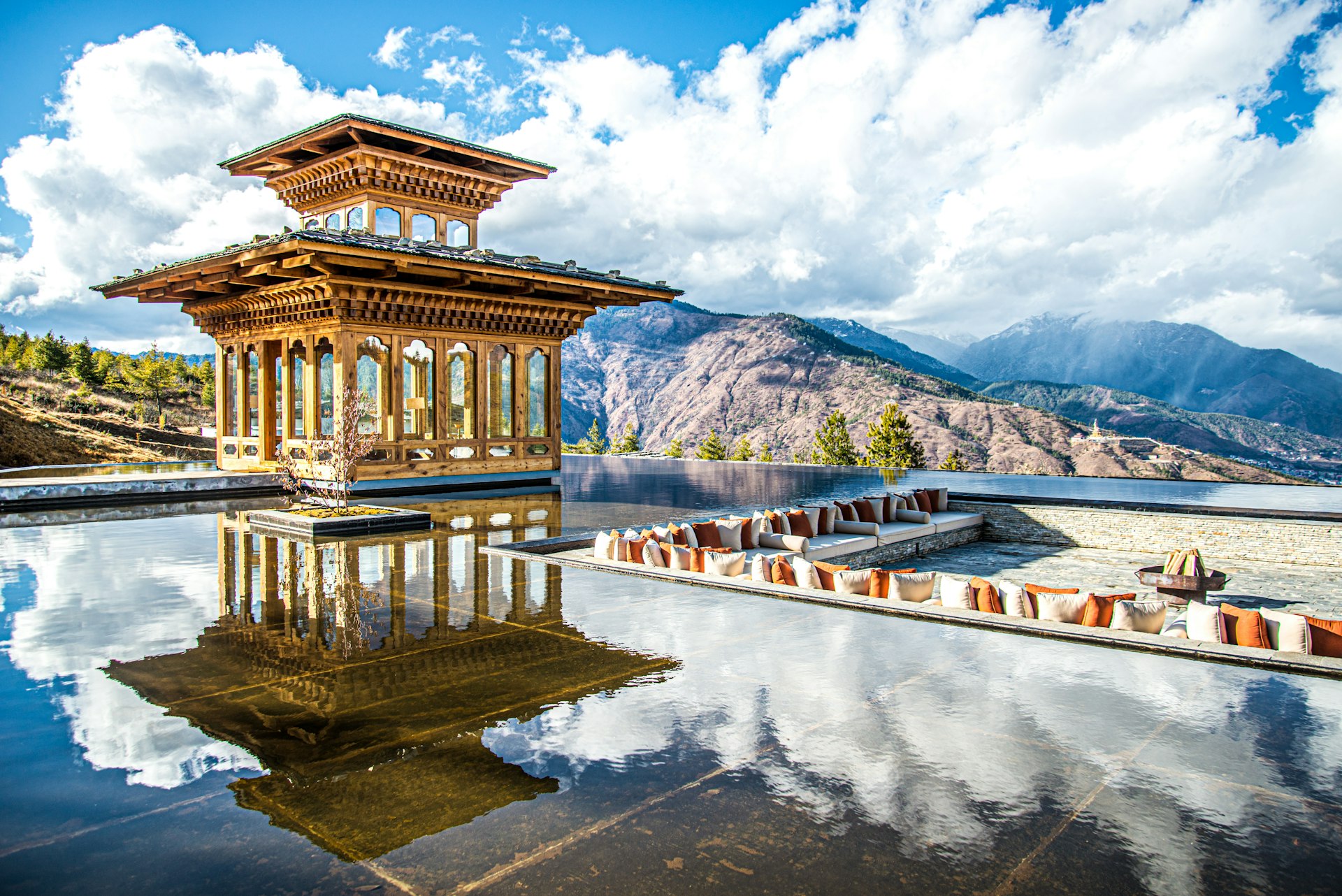
2. Book early for festivals and trekking in the high season
Since reopening, there are no longer incentives for offseason travel, except for occasional hotel deals. This means you may as well time your trip with autumn and spring, when the most famous tsechus (monastic festivals) take place and the leaves change or rhododendrons bloom, respectively. Book far ahead if you’re considering attending a celebration or going trekking.
That said, locals argue that anytime of year is wonderful to visit Bhutan – and that summer and winter are just as wonderful, with plenty of lesser-known festivals. But these seasons are not ideal if you’re planning a multiday trek, due to muddy trails and chilly camping.
Still, the winter holiday season is auspicious, offering crisp air, clear skies and perfect light for photography, with few travelers. Plus, if you go for the December 17 National Day celebrations at Changlimithang Stadium in Thimphu , you may even get the chance to meet the king!
3. Travel insurance is mandatory
Per Bhutan’s Tourism Rules and Regulations 2022 , you must have travel insurance that covers accidental death, permanent disability due to accidents, emergency medical evacuation and hospital charges in case of sickness. You’ll need your proof of insurance coverage – in English – in order to apply for your visa.
If you do find yourself feeling unwell during your trip, consider a visit to Thimphu’s National Institute of Traditional Medicine . A doctor will assess your pulse, temperature and ask about your bowels. In turn, you’ll receive a prescription for ayurvedic medicine crafted from local plants, all at no cost. (A small donation is appreciated.) Another moniker for Bhutan is “Menjong,” which aptly means “Land of Medicinal Herbs.”
Alternatively, head to the nearest hospital or health clinic for treatment geared towards Western medicine. The Jigme Dorji Wangchuck National Referral Hospital , also known as the National Referral Hospital, is the biggest in Bhutan and located in Thimphu.
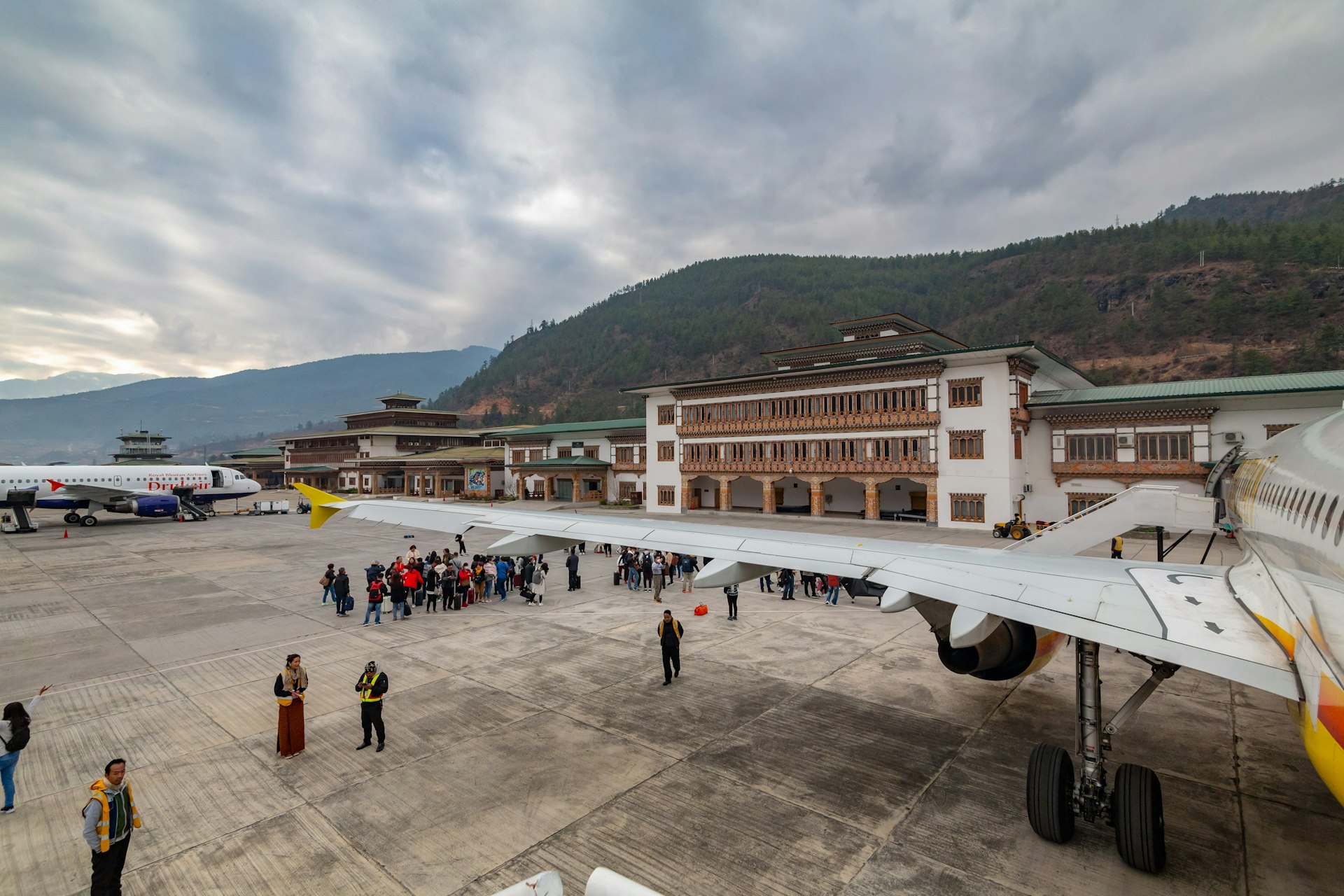
4. Only two airlines fly to Bhutan
Bhutan is served by two national airlines: Drukair and Bhutan Airlines . Because of the challenging landing conditions at Paro International Airport, surrounded by peaks as high as 5500m (18,000ft), only a select few pilots are authorized to fly there.
Direct flights to and from Paro connect you to various destinations, including Bangladesh (Dhaka), India (Bagdogra, Guwahati, Kolkata and New Delhi), Nepal (Kathmandu), Singapore, Thailand (Bangkok) and, from March 2024, the UAE (Sharjah). While Bangkok and Delhi are common entry points, Kathmandu promises the most epic route, with glimpses of Mt Everest on clear days. Request a window seat on the left-hand side when flying to Bhutan.
Note that it’s not possible to check your luggage through to your final destination, so you’ll have to claim it before boarding your Bhutan connection.
You can also reach Bhutan overland via India. (Bhutan has border disputes with China. Transit is not possible.)
5. Bhutan is the world’s first carbon-negative country
Bhutan gained global attention for being the world's first carbon-negative country. Aside from its relatively underpopulated and underdeveloped status (being roughly the same size as Switzerland with only 10% of its population), a key factor in sustaining this achievement is a landmark constitutional mandate requiring the country to maintain a minimum of 60% forest coverage at all times. This is further supported by the environmental conservation pillar of GNH.
Plastic has also been banned since 1999, though it's not regularly enforced. Nevertheless, do your part to keep the environment clean. There’s plenty of signage to remind you along the way: “Clean & beautiful environment is a feast to the soul,” says one placard en route to the Tiger’s Nest Monastery .
6. Bhutan is exceptionally safe
Bhutan, a happy and devout Buddhist nation, maintains a low crime rate, with violent crime being scarce. One of the safest countries you’ll ever visit, it’s ranked the 25th-least-corrupt nation out of 180 countries by Transparency International.
As a single woman, I never felt unsafe on any of my trips to Bhutan. I was also never truly “alone” since I was always under the watchful eye of my guide or local friends. In recent years, the number of female guides has increased, which is more good news for solo women travelers .
7. Save the hike up to Tiger's Nest for the end
Acute Mountain Sickness (AMS) can occur when travelers are above 2500m (8202ft). Given that the most commonly visited cities Thimphu and Paro are just 200m to 300m below that threshold, and that several treks in the Bhutanese Himalayas traverse mountain passes reaching heights of 5000m, AMS is a risk in Bhutan.
Ascend slowly, take rest days when needed, and if you begin to feel ill, stop. If it's not managed carefully, AMS can develop into life-threatening forms of altitude sickness, so pay close attention to how you're feeling. If your symptoms don’t ease, descend right away. Helicopter rescue is always an option in case of emergency.
Note: Due to the altitude, acclimatization may be necessary. I recommend waiting a few days or until the end of your trip – saving the best for last! – before embarking on the iconic Tiger’s Nest Monastery trek , which ascends about 1000m (3000ft). Make sure to schedule a traditional hot-stone bath afterward as well.
8. Stay current on your vaccinations
No vaccines are required for entry into Bhutan. This includes the COVID-19 jab, although you may need proof of it if you’re traveling via India.
That said, you should stay up-to-date with your vaccines and consult a healthcare professional at least eight weeks before your departure in case you need any boosters. Standard recommendations include vaccinations for hepatitis A and B, diphtheria, tetanus, and typhoid, in addition to childhood vaccinations for measles-mumps-rubella and polio.
For longer trips, including travelers who are moving to Bhutan, you may wish to consider vaccinations for Japanese encephalitis and rabies. Rabies is particularly noteworthy since friendly animals, like monkeys and dogs, can all transmit the virus, and untreated infection is fatal. If you are bitten by an animal, such as a stray dog, immediately go to the nearest health clinic and get a postexposure prophylaxis shot (you’ll need a total of four).
9. Pack a few medical essentials
Be wary of mosquito-borne illnesses when visiting in the summer months and in the southern regions. Because of climate change, Bhutan had its first nation-wide dengue epidemic in 2019. Dengue is deadly, and there is no vaccine to protect against it. (Malaria, which can be prevented with drugs, is rare and – fingers crossed – anticipated to be eliminated by 2025 .)
You’ll need sunscreen too. Bhutan's average elevation is 3280m (10,760ft), making it one of the highest countries in the world. It also shares the same latitude as Texas, Egypt and the Bahamas, so the sun is strong. Protect your skin – and your eyes.
There are no tunnels in Bhutan, which means the mountain roads are windy. You may want to consider bringing Dramamine for car sickness and Diamox for altitude sickness – consult your healthcare provider before you travel to discuss whether they're right for you. Pack your own diapers and tampons, if you use them; you can, however, find menstrual pads in stores and at select hotels and restaurants. And don’t forget earplugs – at night, howling dogs can be disruptive to sleep, especially in downtown Thimphu.

10. Bhutanese food is surprisingly delicious – and spicy!
For decades, Bhutanese cuisine suffered in reputation because travelers were mostly exposed to mediocre buffets at their three-star hotels, featuring Indian, Chinese and continental dishes tailored precisely to their palates.
Thankfully, those buffets are slowly being phased out. The local cuisine, emphasizing fresh and seasonal ingredients, is on the up and up and proving to be extremely tasty, if you know where to go. Ask your tour operator or guide for recommendations.
And while Bhutanese cuisine is defined by hot chili peppers, such as with ema datse (chilies with cheese) and kewa datse (potatoes, chilies and cheese), dishes can be modified according to your taste if requested in advance. Still, you may need antacids.
11. Don’t drink the tap water
Tap water isn’t safe to drink in Bhutan unless it has been boiled or purified. Ask your hotel or guesthouse for boiled water, or purchase bottled water to have on your person.
Do, however, drink the local whiskey and lager (Bhutan has a flourishing craft-beer scene).
12. Learn local etiquette
“ Kuzu zangpo la ” means “hello” in Dzongkha, a Sino-Tibetan language and the national language of Bhutan, most commonly spoken in the western part of the country. Recite this while bowing (shaking hands is less common). The deeper the bow, the greater the respect.
Aside from Dzongkha (and the many other local languages and dialects), English is widely spoken because it is the language of instruction in schools. When Bhutanese converse in English, it is common to hear the word “la” at the end of a sentence or question as a sign of respect; for example, “Thank you, la.” Feel free to reciprocate.
If you find yourself invited into someone’s home and offered food, tradition dictates that you say the words “ meshu meshu” while covering your mouth with your hands. After two or three offers, it is customary to accept. Similarly, if you are the one making an offer, or even giving a gift or tip, expect similar resistance. (Do consider giving a small tip if someone has invited you into their home and served you food or arra, a local spirit distilled from rice.)
13. Tipping is appreciated (but not mandatory)
Even if you’ve paid in advance for your all-inclusive trip, show appreciation to your guide and driver by tipping them at the end. On a trek, extend this gesture to the crew – ie the cook, any helpers and the horsemen. While 10–15% is normal, the amount and currency are up to you.
Tipping is not necessary at restaurants and hotels. A 10% service charge is already added to your bill when you dine out.
14. Bhutan has nightlife
While most people are drawn to Bhutan for its serene landscapes, peaceful Buddhist monasteries and imposing fortresses ( dzongs ) such as Punakha Dzong , the country is hiding a buzzing nightlife and music scene that is equally worth exploring.
Thimphu's nightlife centers around Chang Lam near the stadium, featuring diverse options like the Zone (a popular bar hangout), Mojo Park (a fantastic music venue, where the band Misty Terrace got its start), the Grey Area (Bhutan’s first gastropub) and nightclubs Space 34 and Viva City, which are open to the wee hours.
Note: Bhutan has ended dry Tuesdays and bars ars are now open throughout the week.
15. It is finally legal to smoke in Bhutan, but be discreet
Bhutan was long known for its drastic yet visionary health law that forbade smoking and the trade of tobacco products. While the law was recently reversed, smoking must be done “out of sight,” ie behind buildings. The same goes for vaping.
Despite cannabis growing prolifically throughout the country, it remains illegal. Possession can land you in jail for up to one year. The only “drugs” produced in the country are traditional medicines.
Note: While vaping products are sold in a few places in Thimphu, they’re not widely available. It’s advisable to bring your own.
16. Keep an open mind
Whether it’s migoi (yeti) sightings in Bhutan’s wild east, the significance of phalluses as symbols of protection or the flying tiger bringing Guru Rinpoche to the cave where the gravity-defying Tiger’s Nest Monastery now stands, folktales, myths and legends are an integral part of Bhutan’s culture and national pride – and believed to be true.
Approach Bhutan with an open mind. Westerners may find it challenging to suspend logic and reason, but be kind when pushing back, and consider setting aside your own preconceptions. Do as the new tourism tagline says: Believe.
17. Pack layers
You’ll want layers for fluctuating temperatures and varying terrains, and modest clothing for entering temples and monasteries, including socks for cold temple floors. Aside from a good pair of hiking boots, bring a nicer shoe to wear with a gho or kira (Bhutanese national dress for men and women, respectively), should you decide to buy an outfit – highly recommended if you’re attending a festival or meeting with a dignitary. For inspiration, follow Bhutan Street Fashion on Instagram or Facebook.
18. Carry small change
Cash is necessary for buying souvenirs, leaving small donations at monasteries, nunneries and temples (particularly if you’d like a blessing from a monk), and giving tips to your guide, driver and trekking crew, as mentioned earlier.
If you’re an independent traveler, you’ll want to have small bills on hand to pay for entrance fees to sites and museums. Few – as in almost zero – businesses accept credit cards.
19. Stay connected
SIM cards used to be challenging to obtain, but now you can easily get them upon arrival at Paro International Airport. You can also rent a pocket Wi-Fi device there – useful if you’re planning to visit remote regions and need to be online.
20. Bring cash and download these apps
It’s easier to bring your own money (make sure the bills are crisp) rather than rely on and seek out ATM machines in the country. The official currency in Bhutan is the ngultrum, which is pegged 1:1 to the Indian rupee. Do exchange at a bank or hotel so that you can have some small ngultrum notes for butter-lamp offerings and such.
Most Bhutanese businesses accept cash or payments through either goBoB or the BNB MyPay app . Foreign visitors can activate the app by downloading it from Google Play or Apple's App Store, inserting a local SIM purchased at the airport and funding the digital wallet with their credit or debit card. While goBoB is more popular among locals, some tour operators argue MyPay is better for foreigners because it is linked to more international card networks and is powered by Stripe.
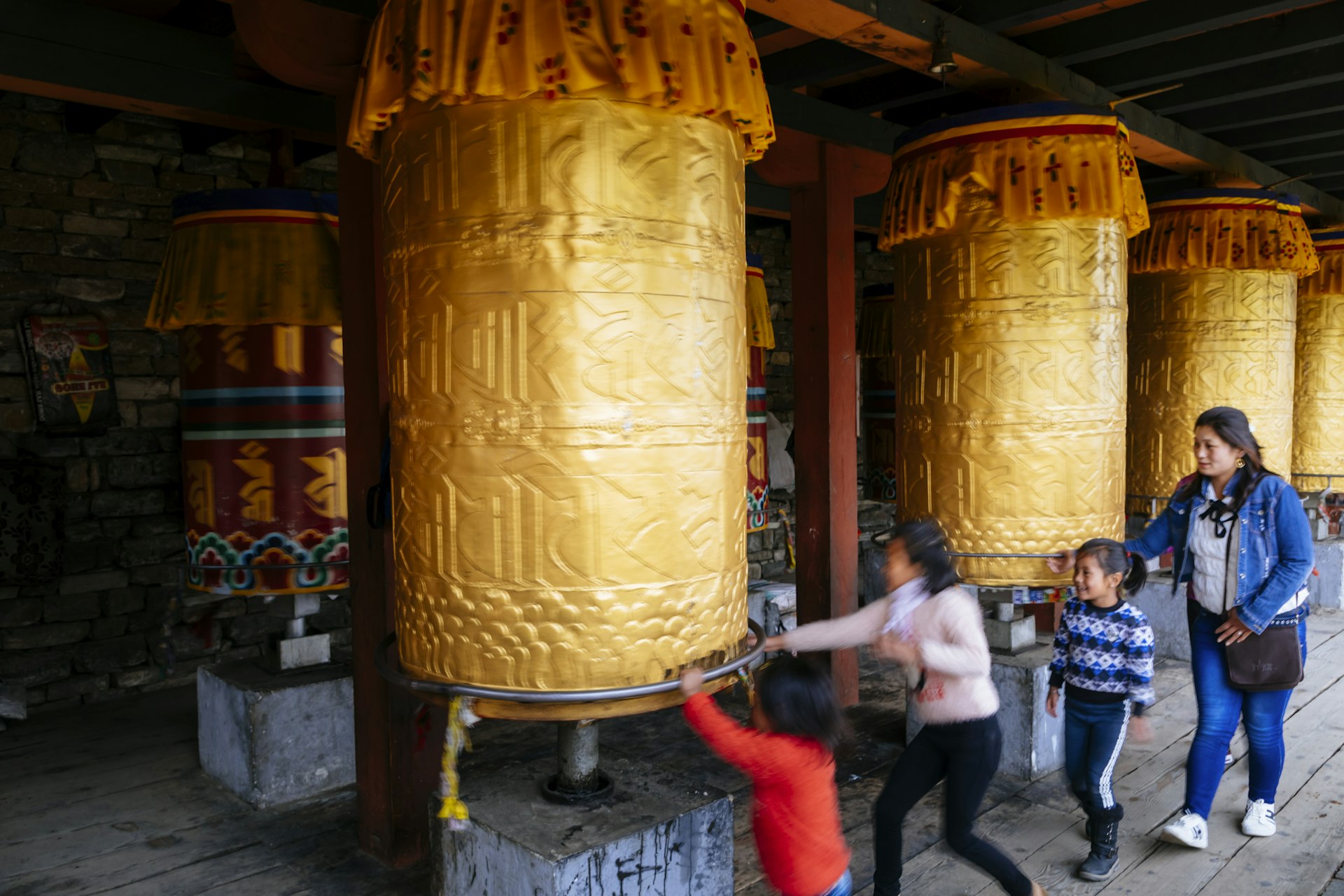
21. Spin prayer wheels clockwise, and other temple tips
When visiting Buddhist monasteries, nunneries and temples, observe proper etiquette: remove shoes and hats, wear clothing that covers your shoulders and knees, refrain from photography in altar rooms, avoid pointing, never lean against a stupa and consider leaving a small donation on the altar or with a monk. If seeking a blessing, it's customary to offer a small donation.
Be it in a car or on foot, circumambulation of a Buddhist temple or shrine, such as a stupa or chorten, must always be clockwise. To go counterclockwise, whether it’s out of ignorance or on purpose, is seen as offensive, culturally insensitive and unlucky. Similarly, prayer wheels, which help purify karma, should be spun in a clockwise direction.
22. Don’t bargain hard
Unlike some other places in Asia, like India or Vietnam, where you’re expected to haggle, Bhutan’s market scene is a lot more straightforward. You typically pay the price that’s listed – aggressive negotiating tactics are a foreign concept.
That said, be prepared to spend a pretty penny if you plan to shop. Your eyes will be undoubtedly drawn to abundantly colorful textiles crafted from natural fibers, like silk and cotton. These can take months to assemble, and the prices – which can top four figures – reflect the meticulous work and cultural richness woven into each piece, often done by women.
Note: Geometric yathras , textiles made of yak wool and commonly found in central Bhutan’s Bumthang region, are more budget-friendly.)
23. Consult the lunar calendar
The Bhutanese calendar is based on Tibet's, which follows the lunar calendar. Buddhist festivals, like tsechus, follow the lunar calendar, meaning the dates change from year to year. There are other cultural festivals, like Bhutan National Day and the Black Necked Crane Festival in Phobjikha Valley, that follow the Gregorian calendar and therefore stay the same.
Explore related stories
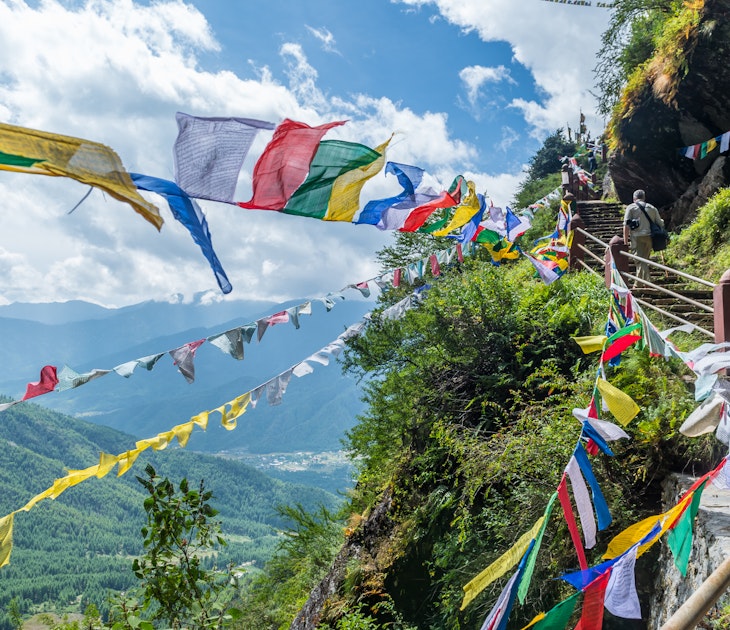
Budget Travel
Jan 28, 2024 • 7 min read
These top tips along with a guide to daily costs can help you plan your budget for a visit to Bhutan.
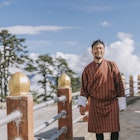
Jan 17, 2024 • 6 min read

Jan 17, 2024 • 8 min read
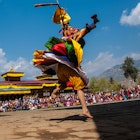
Jan 16, 2024 • 5 min read

Jan 2, 2024 • 8 min read
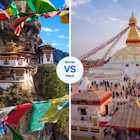
Dec 20, 2023 • 7 min read

Oct 15, 2023 • 3 min read
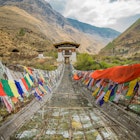
Aug 31, 2023 • 11 min read
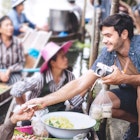
Feb 22, 2023 • 4 min read

Sep 26, 2022 • 10 min read
- Philippines
- South Korea
- The Maldives
- Appointments
- Trade Calendar
- News Archive
- Print Edition
Bhutan reopens to the world with new tourism strategy
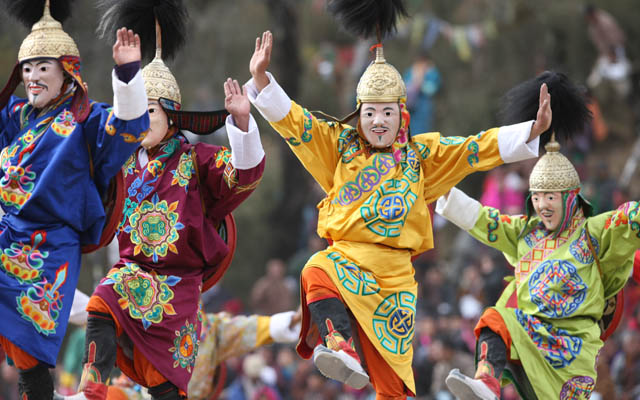
The Kingdom of Bhutan reopens its borders today to international travellers following the Covid-19 pandemic.
Aside from welcoming visitors to the country, Bhutan has also unveiled a new tourism strategy, underpinned by transformations in three key areas: infrastructure and services, tourists’ travel experiences, and environmental impact to maintain carbon-neutral tourism.
Brand Bhutan aims to capture the optimism and renewed ambition of the kingdom, and its new tagline Believe reflects this determined focus on the future, as well as the transformative journeys experienced by visitors.
Prime minister of Bhutan, Lotay Tshering, said: “Bhutan’s noble policy of High Value, Low Volume tourism has existed since we started welcoming guests to our country in 1974 – but its intent and spirit were watered down over the years, without us even realising it.
“Therefore, as we reset as a nation after this pandemic, and officially open our doors to visitors today, we are reminding ourselves about the essence of the policy, the values and merits that have defined us for generations.”
While ‘high value’ is typically understood as exclusive high-end products and extravagant recreational facilities, the term holds a different meaning for the country. To the Bhutanese, it is important to be a high-value society that is “infused with sincerity, integrity and principles, where people must always live in safe communities, among serene environments and derive comfort from the finest facilities”, he explained.
Bhutan will be stepping up its efforts to maintain its status as one of only a handful of carbon-negative countries in the world, and will also enhance its sustainable development policies by raising its Sustainable Development Fee (SDF) from US$65 to US$200 per person, per night. The funds will go towards projects that support the destination’s economic, social, environmental and cultural development.
During the pandemic, the government took the opportunity to upgrade the facilities and infrastructure of the country, as well as enhance the standards and certification process for tourism service providers. Employees across the tourism industry also were required to participate in upskilling programmes to focus on enhancing service quality.
In addition, travellers can look forward to elevated authentic experiences supported by world-class services and personal care.
Minister of foreign affairs, Tandi Dorji, said: “We plan to work with our tourism partners to continue to upgrade the itineraries that guests can experience in our country – to help showcase the very best that Bhutan has to offer.
“We hope that visitors to Bhutan will notice and welcome these changes, and we very much look forward to welcoming all guests to Bhutan.”
Positive outlook for Wyndham Hotels & Resorts buoyed by APAC growth

Discover the wonders of Japan with BWH Hotels

Advertise with us

Is Your Business Listed On TTGmice Planner Online?
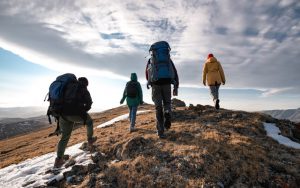
Future of Tourism: Digital Travel APAC 2023 Innovation Brief
RELATED ARTICLES
Maldives reaffirms commitment to responsible, inclusive tourism development, marriott, usaid to lift economic conditions for maldivian islands, bhutan tourism looking bright with reduction of sustainable development fees, saudi arabia shares plans for sustainable flights, airport operations, bhutan joins global luxury travel network virtuoso, off to an adventure, bhutan set for september reopening with new tourism approach, unwto kicks off second awake tourism challenge, greening of a resort island, tried and tested.

21 Carpenter

Dusit Thani Bangkok offers early-bird savings
What to buy now.

Journey through Singapore’s rich heritage this May

- TTG Travel Awards
- Privacy Policy
- Terms of Use

All Rights Reserved

Sustainable Tourism in Bhutan – Balancing Conservation and Development

Tourism is not a single sector responsibility – as it used to be perceived – but a multi-dimensional concept which requires constant communications , collaboration, and partnerships. (Extracts of an interview with Dr Karma Tshering from Research Panel Sustainability Leaders Project: sustainability-leaders.com)
Bhutan declared an extensive network of Protected Areas, covering almost half the size of the nation’s land, one of the highest proportions in any country worldwide. The responsibility for its management within the government was entrusted to the Nature Conservation Division, the office I worked for during the start of my career. At the time, Protected Area (PA) management was relatively new in Bhutan. I consider myself lucky to have been given the opportunity to become, almost from its inception, a member of a group of Protected Area professionals who grew with that vision.
Unlike many other countries, Bhutan’s conservation policy allows people to reside within the PA. This circumstance demanded an integrated approach to conservation and development. Since most of the conservation programs were donor-funded, they lacked sustainability. The people’s interest in conservation activities were short-term. Therefore, identifying projects that ensured long-term commitment and benefits to both people and conservation was essential. That’s when my attention was drawn to tourism.
Through my research I was able to demonstrate that sustainable tourism development is a viable option to stimulate the support of the public for biodiversity conservation and cultural preservation, and that such development is necessary for the sustainability of the Protected Areas in Bhutan.
The four pillars to the vision of happiness, in addition to the conservation of the natural environment, are the preservation of the cultural heritage, equitable socio-economic development, and good governance. While the country seeks to focus development based on each of the happiness pillars, in my view we cannot focus on each pillar in isolation but will need an integrated approach that combines all four pillars.
It is important to identify programs that can successfully combine all the pillars, resulting in an overall positive impact. Tourism has the prospect to provide this critical link.
Especially for Bhutan, with limited potential for industrialization, but with a unique culture and an intact natural environment, the capacity of tourism as a major force for its development is apparent. There are several examples around the world where tourism is becoming the driving force for conservation. Likewise, here in Bhutan, tourism has made a substantial contribution to conservation and happiness.
The stringent conservation policies weigh heavily on the local people living in and around the forests and parks with increased wildlife predation impacting their subsistence livelihood. This problem has been alleviated through seed funding established for livestock compensation established through tourism, other interventions and promoting of community-based tourism to provide supplementary income.
I am sure many of us would agree that human motivation to a large extent is incentive-driven. Incentives can come in different forms either direct or indirect. Likewise, an incentive-based approach to conservation to me is the most logical and practical to fulfilling conservation needs.
It is only natural that people become more encouraged to participate in conservation if they see some benefits for themselves. Economic benefits are no doubt attractive, but there are also far-reaching benefits for people’s appreciation towards conservation through nature recreational activities.
I had the opportunity to demonstrate this in Bhutan by starting nature recreational programs. I realized that although we had an extensive network of parks and Protected Areas in Bhutan, it lacked public interest in its appreciation and consequently its support.
Incentivizing through responsible enjoyment to me is a sustainable approach. I played a key role in advocating the establishment of a Division within the Department of Forests and Parks that was specifically mandated to promote nature recreation and ecotourism programs within the forests and parks of Bhutan.
The Division, since its establishment in 2011, has created several nature recreational areas and programs for the public. This has led to an increased understanding and appreciation of natural areas, resulting in increased public support for conservation.
The state of the natural environment is one of the most important attributes for developing sustainable tourism. Bhutan is fortunate that the stringent conservation policies within a large subsistence farming community have led to an intact natural environment consisting of over 72% of the country under forest cover.
Travellers are increasingly seeking destinations that are more natural. The authentic cultural and natural landscape of Bhutan has branded Bhutan as one of the top tourist destinations and Bhutan will continue to be sought for its natural exclusivity by our visitors.
Dr. Karma Tshering (PhD.) is the Managing Director of BTFEC (Bhutan Trust Fund for Environmental Conservation). He has Ph.D. in Conservation and Development from University of Sydney, Australia. A passionate conservationist, Dr. Karma has served for over 27 years in various agencies in the field of environmental conservation and ecotourism. He has been actively involved in the promotion of incentive-based conservation through transformation of conventional system of forest and park management by establishing and institutionalizing nature recreation and ecotourism in the country. He continues to dedicate his time and services for environmental conservation.
This series is sponsored by Ecotourism Project “Mainstreaming Biodiversity Conservation into the Tourism Sector in Bhutan” funded by GEF-UNDP through the Department of Tourism, RGoB.

Read More Stories
Is thimchhu dying.
April 27th, 2024
Thimchhu or the Thimphu river, the calm and scenic...
A fiery issue
April 26th, 2024
A fire on the ridge of Yangchenphug, Thimphu, on...
Giving back
April 25th, 2024
The Bhutan National Bank wants to contribute or give...
Are we throttling press freedom
Third of May is observed as World Press Freedom...
About tigers and much more
In the eighth century, Guru Rinpoche flew on the...
Leadership matters
It was heartening to learn that RCSC is planning...
Accident occurs as JDW memorial tournament heads to final
An archer from the Rignga United team was hit...
2024 Olympic Day focuses on Sports Science
April 24th, 2024
The day-long Olympic Day Celebration at the Phuentsholing Sports...
Karma Dema, lone female BPL coach
April 23rd, 2024
Karma Dema, 32, from Mongar, will lead the newly...
Finance ministry projects 5.68 percent growth this year
April 9th, 2024
Thukten Zangpo The finance ministry projected Bhutan’s economy to...
Non-hydro debt set to reach threshold with Nu 35 billion borrowing in FY 2024-25
April 6th, 2024
The government can borrow an extra Nu 35.88 billion...
Vehicle import ban saves Nu 5.3 Billion
March 18th, 2024
The ban on importing vehicles could have helped Bhutan...
Advertisement
- Environment
- Road to Net Zero
- Art & Design
- Film & TV
- Music & On-stage
- Pop Culture
- Fashion & Beauty
- Home & Garden
- Things to do
- Combat Sports
- Horse Racing
- Beyond the Headlines
- Trending Middle East
- Business Extra
- Culture Bites
- Year of Elections
- Pocketful of Dirhams
- Books of My Life
- Iraq: 20 Years On
A trip to the hidden Himalayan kingdom of Bhutan, where time stands still
The inspiring asian country offers fresh air, stunning scenery and unforgettable experiences.
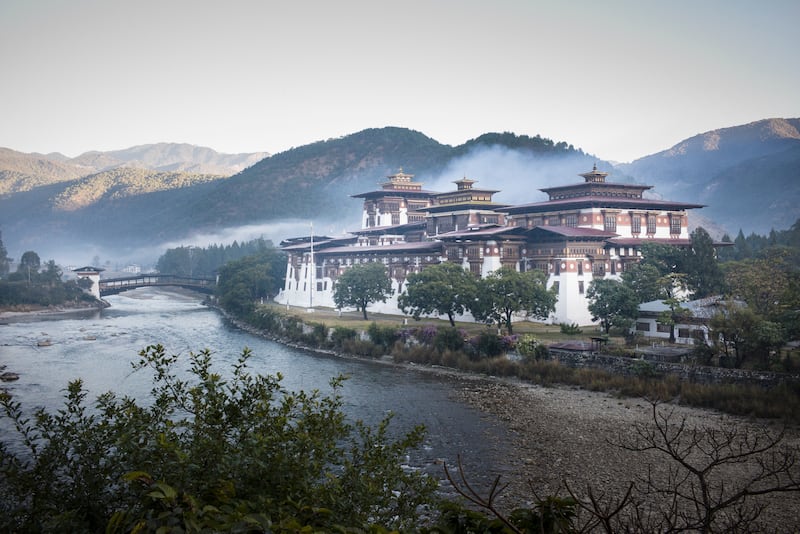
Built in the 17th century, the Punakha Dzong is an ornate riverside citadel and the administrative centre of the district of Phunakha in Bhutan. Photo: Aman

There are few countries as mysterious as Bhutan . But for all its mystery, the tiny landlocked nation tops many a traveller’s bucket list. Thanks to its dramatic Himalayan mountain landscapes, striking dzong fortresses and crisp clean air, it’s become a go-to destination for those looking to get off the beaten track.
The fact that it’s home to a selection of some of the world’s most exclusive hotels, including Six Senses, Como and andBeyond properties, certainly helps. Arguably, the most luxurious of all the premium offerings in the country is Amankora , which is where I happened to find myself for a week in January.
A five-star travelling experience, journeying around the country with Aman shows off the breadth of Bhutanese experiences on offer, without any of the logistical quandaries associated with backpacking. The hotel is spread across five distinct lodges, each located in different districts, or Dzongkha, around Bhutan. Aman maps out journeys around the country, factoring in visitors’ requirements and time frames. My six-day visit took me to Amankora lodges in Paro, Thimphu and Punakha in the west of the country, missing the lodges in Gangtey and Bumthang, located in the centre and east.
I arrived in Bhutan with very few preconceptions. Although, a 25-minute YouTube crash course saw me land with a few key details under my hat – the country’s signature dish is a chilli and cheese stew, there are no traffic lights in Bhutan whatsoever and, at 3,280 metres above sea level, it is the country with the highest average elevation on the planet – I had everything else to learn upon arrival.
The flight into Bhutan sets the tone for the entire stay. I flew from Dubai via Kathmandu, and the hour-long Drukair flight was easily one of the most scenic of my life. After flying out of the Nepalese capital, we were soaring above the clouds, with the Himalayan mountains emerging below us. About halfway through the flight, the captain announced that passengers could see Mount Everest to their left. I felt incredibly lucky to be sitting in seat 9A with a clear window view.

As quickly as you ascend, you descend, curling into a valley in the Bhutanese capital and landing in an opulently decorated, but modestly sized, Paro International Airport.
Our first port of call was the Amankora Thimphu lodge in the Bhutanese capital, Thimphu. About an hour’s drive from the airport, it’s a popular first stop on an Aman journey around Bhutan. As close as you’ll get to a city hotel in the Amankora collection, it is nestled in the hills to the north of the city, surrounded by forest and royal residences.
Built in the style of a traditional dzong fortress, Amankora Thimphu is spread across several buildings, built around courtyards with 16 king-size rooms, six of which were occupied when my group of four visited.
Everything about the hotel is built for cosy comfort. Traditional wood-burning stoves in the rooms, tableside fireplaces in the restaurant and fire pits on the terrace ensure warmth on the frostiest of evenings. Hours can be lost sitting on the banquette window-seats, reading and staring out into the forest. Guests can also book warming slots in the spa’s steam room, and staff are on hand to serve warm apple and cinnamon tea at a moment’s notice.

There is a convivial feel to the open-plan dining room, with a lounge to sit in and drink the aforementioned tea, read or play card games. This theme plays out in each of the lodges, as rooms to socialise and relax in make up the heart of the hotel. In Amankora Punakha it’s a Scandinavian-style dining room with communal tables, and in Amankora Paro there are two rooms, one with comfortable sofa areas and a second with long banquet dining tables.
A day in Thimphu is best used hiking, eating and exploring cultural sites and temples. After a hearty warming breakfast of apple porridge, my first full day in Bhutan began at the Buddha Dordenma statue. A striking religious monument that opened in 2015, the gilded Buddha sits atop a monastery, where we were welcomed with a traditional white khata scarf and received a blessing from the head monk.
On a continued spiritual trajectory, in the afternoon, we hiked to Druk Wangditse Lhakhang. Built in 1715, it is among the oldest temples in Thimphu. A low-impact hike to ease our way into the higher altitude walks, it took us about 50 minutes from start to finish, not including our temple visit. From the hillside flat path, the group enjoyed views of the city, with a guide pointing out the official residence of Jigme Khesar Namgyel Wangchuck and Jetsun Pema, or Druk Gyaltsuen, the King and Queen of Bhutan, government buildings and other significant monuments in the capital city.
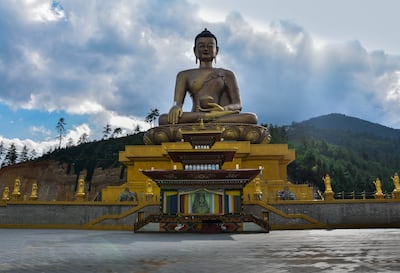
The path is lined with prayer flags, a motif that is repeated throughout the country. Either all white, in tribute to the dead, or strings of five different colours that represent the elements, the prayer flags form part of the forest backdrop, and can be spotted roadside, on hikes and on the approach to temples.
The food in Thimphu served as a perfect introduction to Bhutanese cuisine. Amankora serves a daily set menu – a fine-dining take on the country’s signature dishes, or diners can opt for dishes from the international a la carte selection – the yak carpaccio and smoked trout were personal highlights.
At the hotel, trying the Bhutanese set menu at least once is essential. Dishes include momos, a very similar take to the Nepalese classic; gyen hogay, a cucumber salad; yaksha lhaphu paa, a braised yak dish; nya fin tshem, a locally sourced trout curry; and ema datshi, the famed Bhutanese national dish, a chilli and cheese stew. The dish packs a punch, with green chillies slow cooked in garlic and onions, with local cheese. At Amankora, all of the food is included in the room rate, with selected drinks.
Away from the hotel, we dined at Babesa, a 100-year-old restaurant in a 600-year-old farm house that serves classic Bhutanese fare. The meal began with butter tea and soup, with another take on ema datshi chilli and cheese, as well as beef and chicken stews. The key theme of Bhutanese cuisine is spice – chillies feature in almost every warming stewed dish.
It was then time to travel from Thimphu to Phunaka. On the day we left the capital, we woke up to flurries of snow, which made for an exciting and beautiful drive over the mountain pass, climbing up to 3,500 metres. About a three-and-a half-hour journey into a new valley, we were greeted by an entirely new subtropical climate in Phunaka. The pine and fir trees of Thimphu were swapped for cacti and agave, with banana, avocado, mango and orange trees growing in orchards. If you visit Bhutan in the summer, you’ll be greeted by vibrant purple jacaranda trees in the valley.
For those in search of outdoor pursuits, Phunaka is a holidaymaker’s dream. The entrance to the lodge is accessible via a suspension bridge crossing the blue Mo Chhu River. On the other side a buggy greets visitors, ferrying them to the hotel, which is housed inside a farmhouse leased from the royal family.
A reflection of the warmer climes, the lodge has a swimming pool and a large outdoor terrace, as well as a spa and private dining rooms.
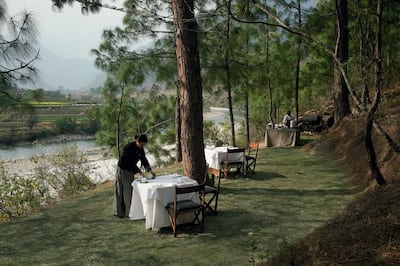
During our stay, we take on an hour’s hike up to Khamsum Yulley Namgyal Chorten, built in 2004 by Tshering Yangdon, mother of the king. It began as an easy 45-minute walk through fields of cows and past streams, finishing with a challenging final stretch up hill. After the hike, we tried our hands at archery, the national sport of Bhutan, and took a rafting trip down the river, where our enthusiastic guide pointed out wildlife indigenous to the area.
To wrap up our stay in Phunaka, we visited the valley’s dzong, the second oldest fort in the country.
Built in the 17th century, the ornate riverside citadel is the administrative centre of the district and a must-visit, with striking murals depicting Bhutanese and Buddhist history painted throughout.
The final leg of my three-lodge journey took me to Amankora Paro. Another three-and-a-half-hour drive back towards the airport town. Other guests I met on the trip were planning to continue into Amankora Bumthang and take a domestic flight back to Paro. Our journey remained on terra firma, but a highlight was driving past a family of Nepalese grey langurs in trees on the side of the road.
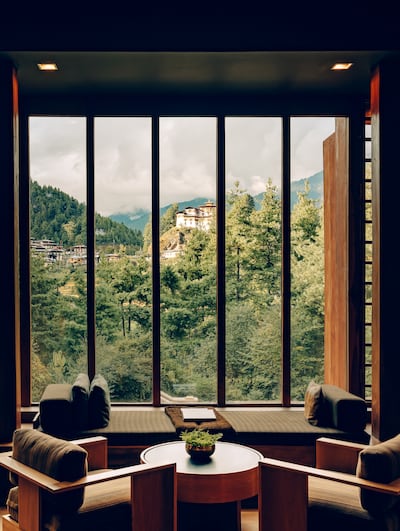
Amankora Paro has the feel of a hidden lodge, accessible through a fir forest, with the hotel tucked away in a clearing. It has a very similar aesthetic to the Thimphu and Phunaka lodges, with stone buildings, wooden design features and almost identical rooms, which gives the multiple hotel experience a thread of continuity. After dinner, we had an early night to prepare for the hike up to Tiger’s Nest.
Easily the most famous monument in Bhutan, Paro Taktsang, more commonly known as Tiger’s Nest, is a cliff-side monastery, accessible via a 4.5km hike up to the site. Far from a walk in the park, the hike is suitable for people of varying fitness levels if they go at their own pace.
That said, the final stretch of steep stairs is a push for even the fittest of hikers. The reward, however, is abundant. Stunning views of the monastery kept me motivated as I walked, and looking down on the valley from above was a breathtaking experience.
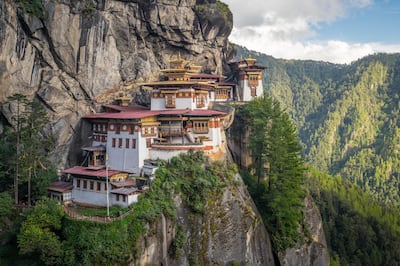
On the way down, we were rewarded with a Bhutanese lunch at an Aman-owned cabin and then whisked back to the hotel’s spa for a Japanese onsen bath. The open bath, heated with volcanic rock, had secluded views over the lodge’s private patch of forest.
Poetically, though unintentionally so, I ended my trip as it began – reading a book and soaking up lush, green forest views, urging time to slow down so that I could enjoy every final moment in Bhutan.
Checking In
Travel updates and inspiration from the past week


IMAGES
COMMENTS
Tourism in Bhutan began in 1974, when the Government of Bhutan, in an effort to raise revenue and to promote Bhutanese unique culture and traditions to the outside world, opened its isolated country to foreigners. In 1974 a total of 287 tourists visited the Kingdom of Bhutan. The number of tourists visiting Bhutan increased to 2,850 in 1992 ...
History of Tourism in Bhutan - Tourism in Bhutan began in 1974, when the Government of Bhutan, in an effort to raise revenue and to promote the country's unique culture and traditions to the outside world, opened its isolated country to foreigners. In 1974, 287 tourists visited Bhutan. Since then the number of tourists visiting Bhutan has ...
Bak is far from the only person to find serenity in Bhutan. In the 1970s, as it began opening up to tourism, the Himalayan kingdom established the "Gross National Happiness Index." A national ...
Sandwiched between the Asian giants of China and India, Bhutan first opened its doors to international visitors in the 1970s, adopting a policy of "High Value, Low Impact" tourism. It mandated ...
The actual arrival of tourists started only in 1974 with 287 visitors. Since then the number of tourists has been increasing every year and in 2013 with record high inbound arrivals of 116,209 as per Tourism Council records. ... Until 1991, then known as Bhutan Tourism Corporation (BTC), a quasi-autonomous and self-financing body, implemented ...
money as a tourist tax. Despite its low-volume, high-yield principle, the Tourism Council of Bhutan is working to increase arrivals, including attending international trade shows, which contradicts its traditional policy of low-volume tourism. Bhutan started a high tariff ($130/ day per foreign tourist) since the beginning of tourism
Bhutan has a clearly established framework for the development of tourism underpinned by the country's Gross National Happiness (GNH). Tourism was introduced to Bhutan in 1974 as part of a visionary modernization and economic development plan introduced by Bhutan's former King, Jigme Singye Wangchuck. Aware that an unrestricted flow of ...
4 Bhutan's tourism development policy. Bhutan started tourism in the 1970s with a deliberately cautious approach combining both the experience of nature and culture with having minimum impact. We can see this combined approach in the contemporary perception of Bhutan's government towards ecotourism, ...
The Kingdom of Bhutan has attracted international attention for adopting "Gross National Happiness" (GNH) as its national development policy. ... 'Tourism in Bhutan: The Serpent in Paradise'. The Geographical Magazine, November 1989, pp. 18-23. 16. Tom Owen Edmunds, Bhutan: Land of the Thunder Dragon. London: Elm Tree Books, 1988, p.
Bhutan has been recently listed as one of the top tourist destinations for 2013 in few popular magazines, such as Forbes, the travelers magazine of National Geographic, and New York Times travel magazine (Kuensel, 2013). Bhutan was also among the top three finalists for tourism for "Tomorrow's Destination Stewardship Award, 2013", among 133 ...
According to the Bhutan Tourism Monitor (BTM), the number of tourists who visited Bhutan in 2019 was 315,599 which was a 15% increase from the previous year. Tourism helped Bhutan earn US$88.65 million in foreign exchange earnings (TCB, 2019a). Bhutan opened to international tourism in the early 1970s and was founded on the principle of high ...
Tourism in Bhutan Bhutan recorded a total of 29,800.00 tourists in 2020, ranking 161st in the world in absolute terms. That smaller countries regularly perform lower in a comparison of the absolute number of guests, is obvious. By putting the tourist numbers in relation to the population of Bhutan, the result is much more comparable picture ...
Follow. Bhutan, a tiny Himalayan kingdom known for its pristine environment and sustainable development, will cap tourist numbers at 200,000 a year from 2023 to protect its natural resources and fight climate change. The move is part of the country's efforts to become carbon neutral by 2025. Bhutan is already 72% carbon negative, meaning it ...
Tourism. Tourism sector in Bhutan was started in 1974 as a source revenue and promote unique Bhutanese culture and tradition rich natural environment. Over the years Bhutan is regarded as the most exclusive travel destinations in the world for its authenticity, remoteness and a well-protected cultural heritage and natural environment.
Tourism in Bhutan was started in 1974 in view to open the doo r for foreign countries . ... Until 1991 the Bhutan Tourism Corporation (BTC), a quasi-autonomous and self-financing body, implemented ...
Statistics from the Tourism Council of Bhutan, the apex tourism organisation, show a steady growth in numbers. Arrivals increased by 35.1 percent in 2016 with 209,507 visitors. International visitors recorded a 35 percent increase over 2015 while regional visitors grew by 50 percent in the same period. 2017 saw a total of 254,704 visitors.
Bhutan, a bucket-list destination for many adventure travelers, closed its borders on March 22, 2020, due to the global pandemic. They have since reopened with a new tourism strategy, focusing on ...
Bhutan's tourism's policy has been effective to date in limiting environmental and cultural impact from Western tourism. But as tourism demand is rapidly growing, an assessment of the country's carrying capacity is necessary if Bhutan's 'middle path' policy of high yield, low impact tourism is to continue to be effective. ...
1. Independent travel is finally possible, but a tour operator is still the way to go. Since reopening in 2022, Bhutan has scrapped its all-inclusive tour-package minimum, and initially raised the Sustainable Daily Fee (SDF) to US$200 before reducing it to US$100, valid now through September 2027.There is a 50% discount for kids ages six to 11, with no SDF for those under six.
By TTG Asia. / Posted on 23 September, 2022 13:39. The Kingdom of Bhutan reopens its borders today to international travellers following the Covid-19 pandemic. Aside from welcoming visitors to the country, Bhutan has also unveiled a new tourism strategy, underpinned by transformations in three key areas: infrastructure and services, tourists ...
Bhutan declared an extensive network of Protected Areas, covering almost half the size of the nation's land, one of the highest proportions in any country worldwide. The responsibility for its management within the government was entrusted to the Nature Conservation Division, the office I worked for during the start of my career. At the time, Protected Area (PA) management was relatively new ...
Modern tourism in Bhutan began in the 1970s, when western Bhutan was opened to international visitors for the first time. Bhutan's tourism has since undergone a transforma-tion. In 1991, the state monopoly ceased with the privatization of the tourism industry and the ... Bhutan started tourism in the 1970s with a deliberately cautious ...
Data from Bhutan Live reports a staggering increase in tourist arrivals in the first quarter of 2024, with over 32,500 Indian tourists opting for the SDF option - more than double the number who ...
There are few countries as mysterious as Bhutan.But for all its mystery, the tiny landlocked nation tops many a traveller's bucket list. Thanks to its dramatic Himalayan mountain landscapes, striking dzong fortresses and crisp clean air, it's become a go-to destination for those looking to get off the beaten track.. The fact that it's home to a selection of some of the world's most ...
Bhutan's Prime Minister Tshering Tobgay speaks at the "India-Bhutan Tourism: Expanding Horizons" event organized by FICCI in Delhi, India, Mar. 15, 2024. Credit: Prime Minister's Office ...